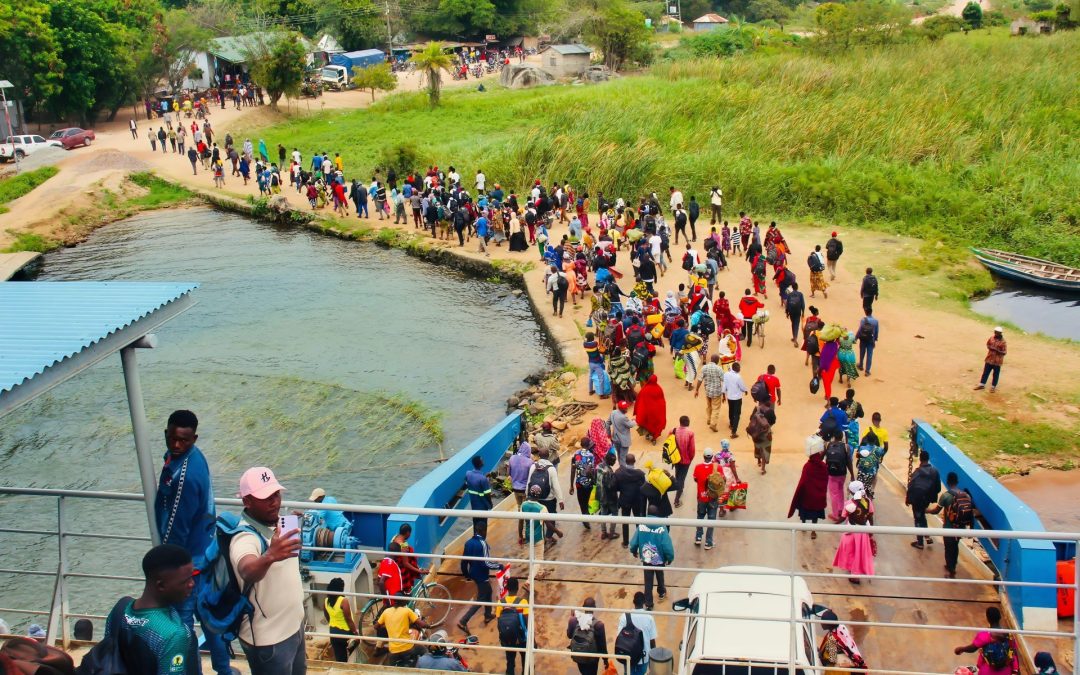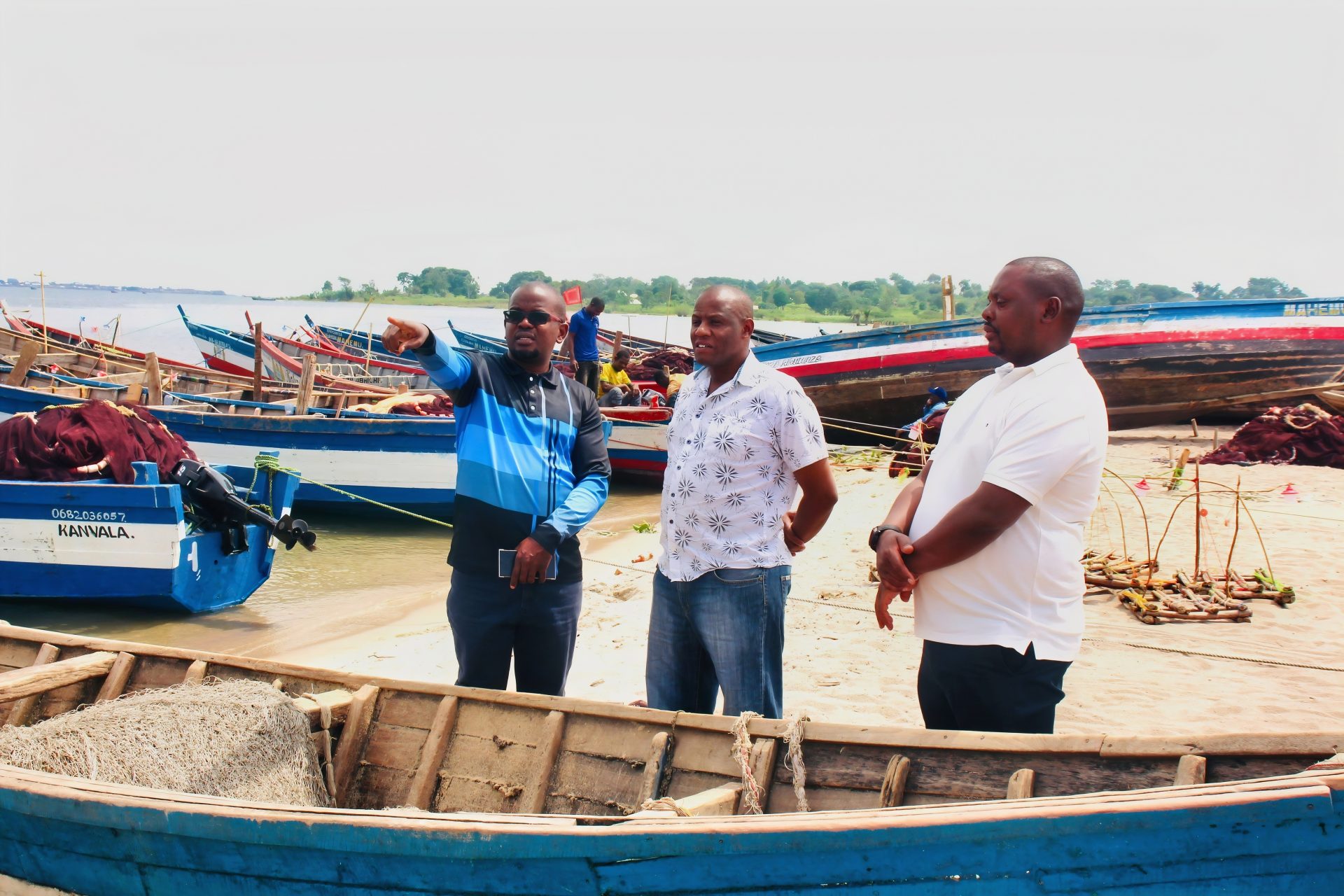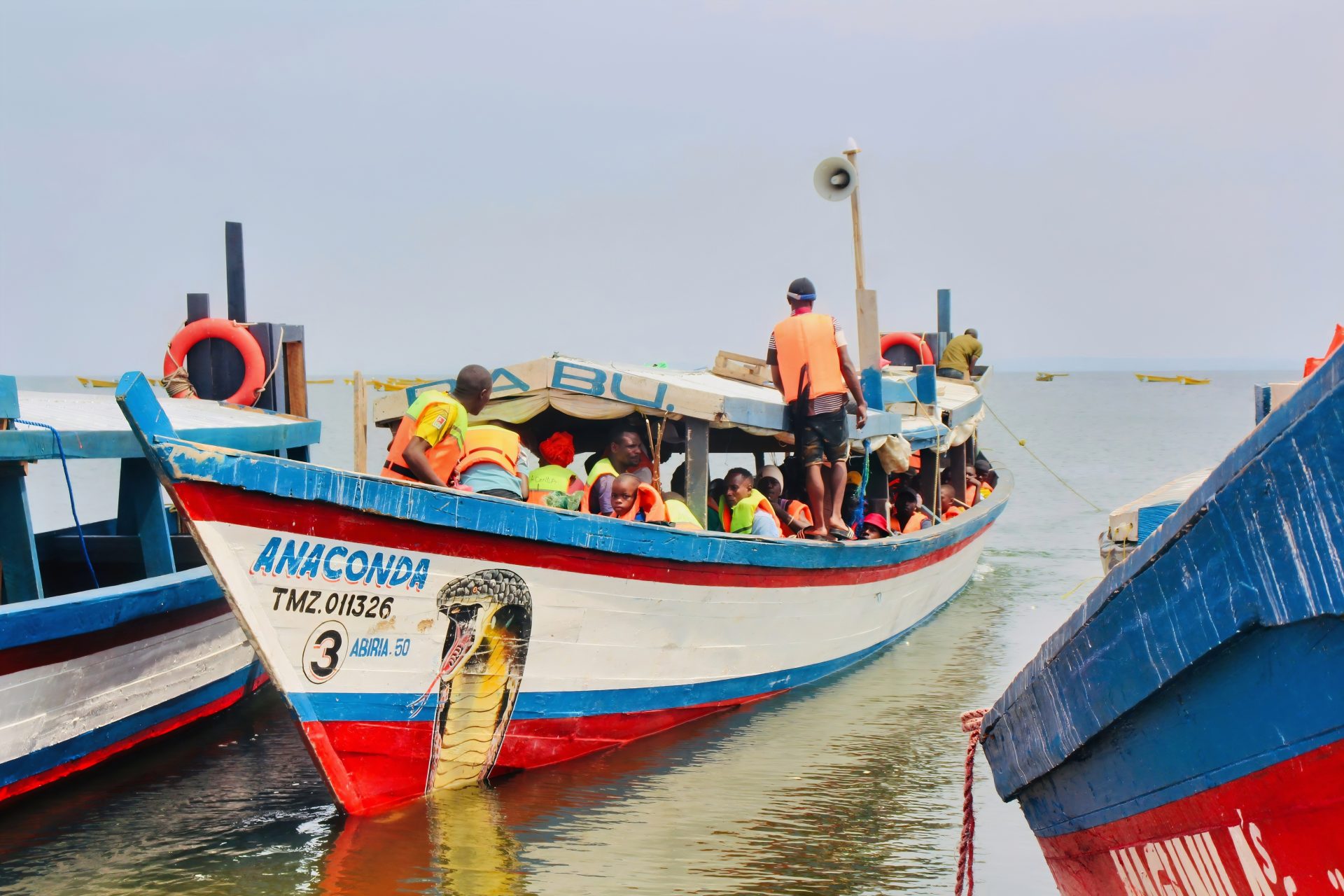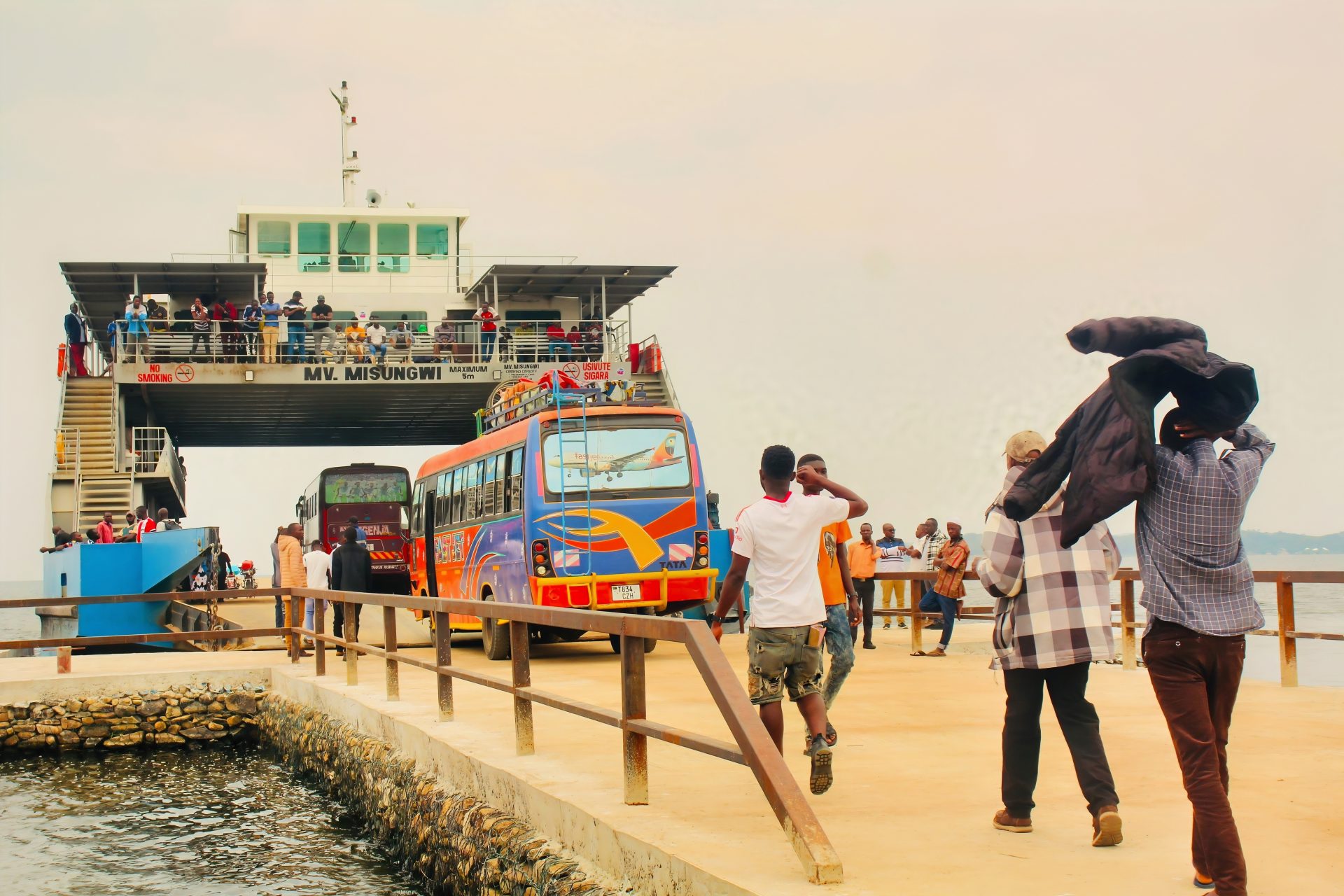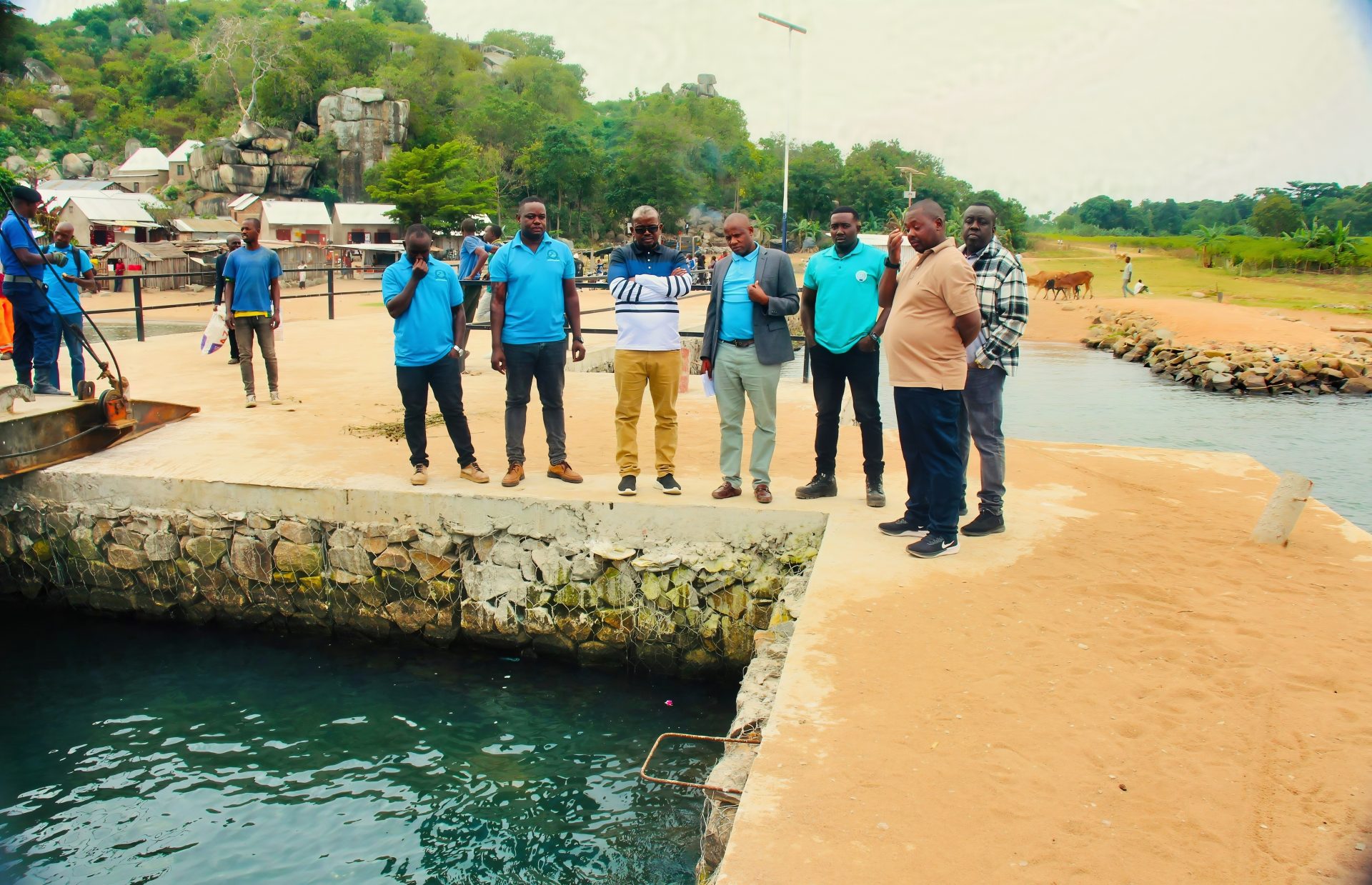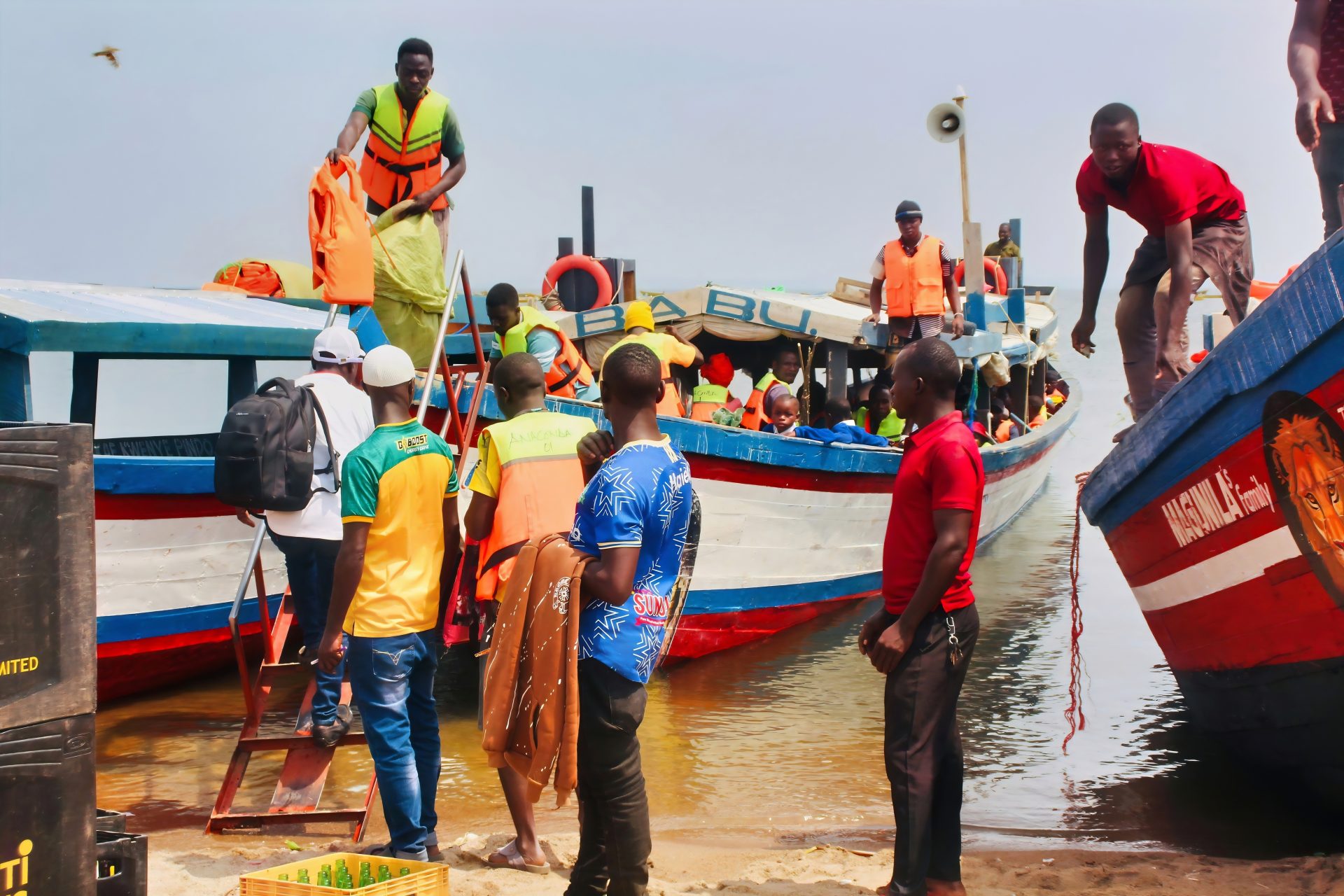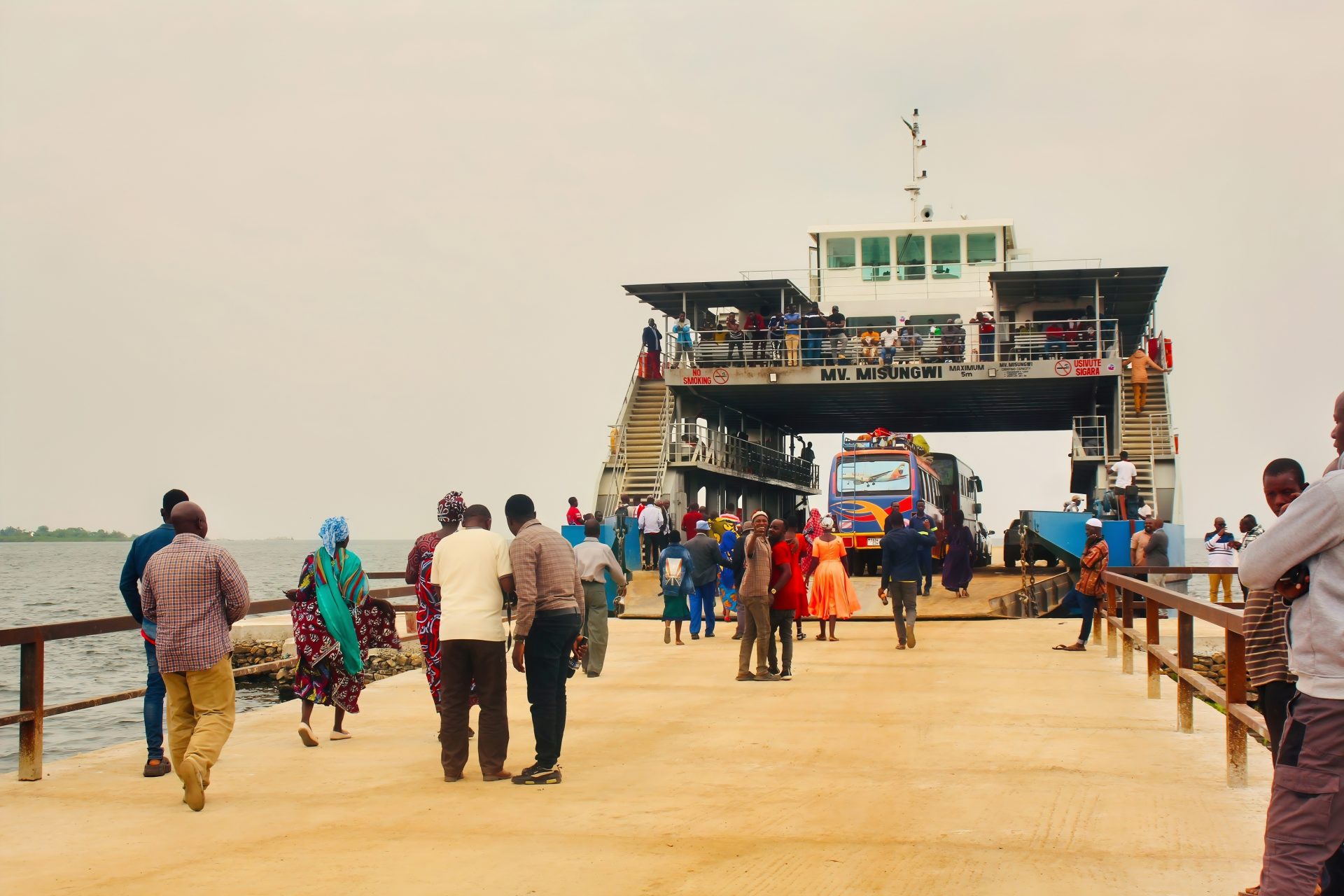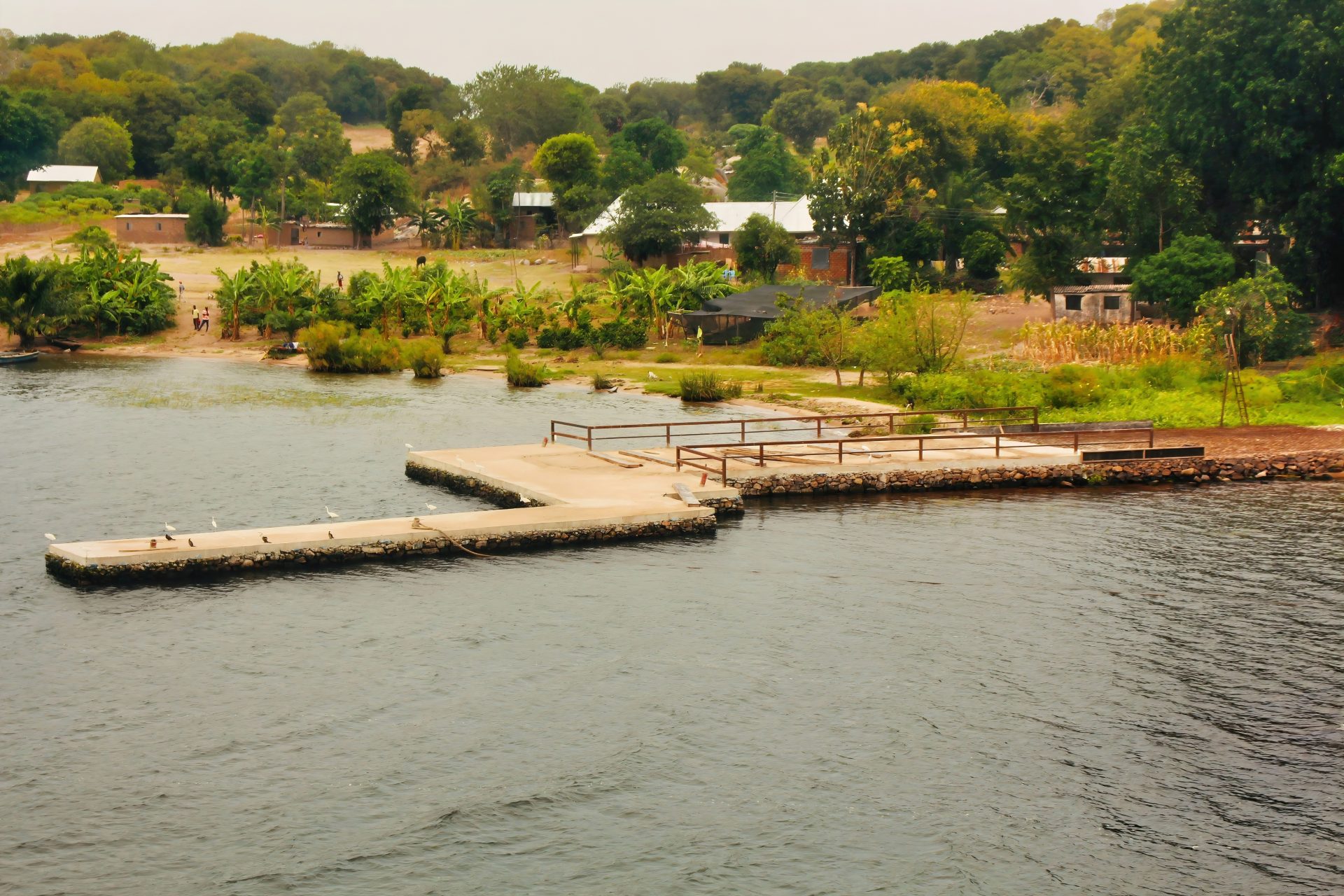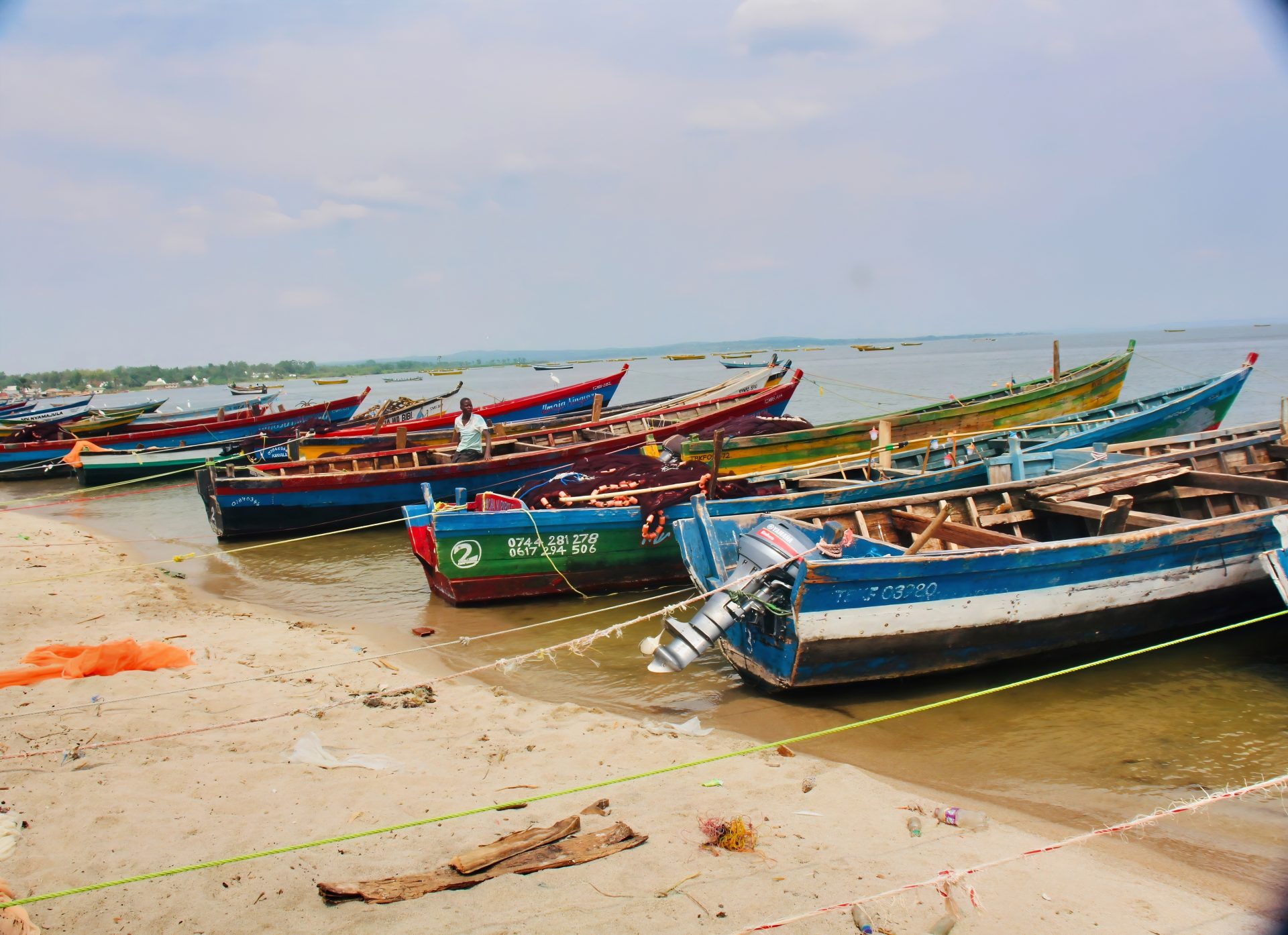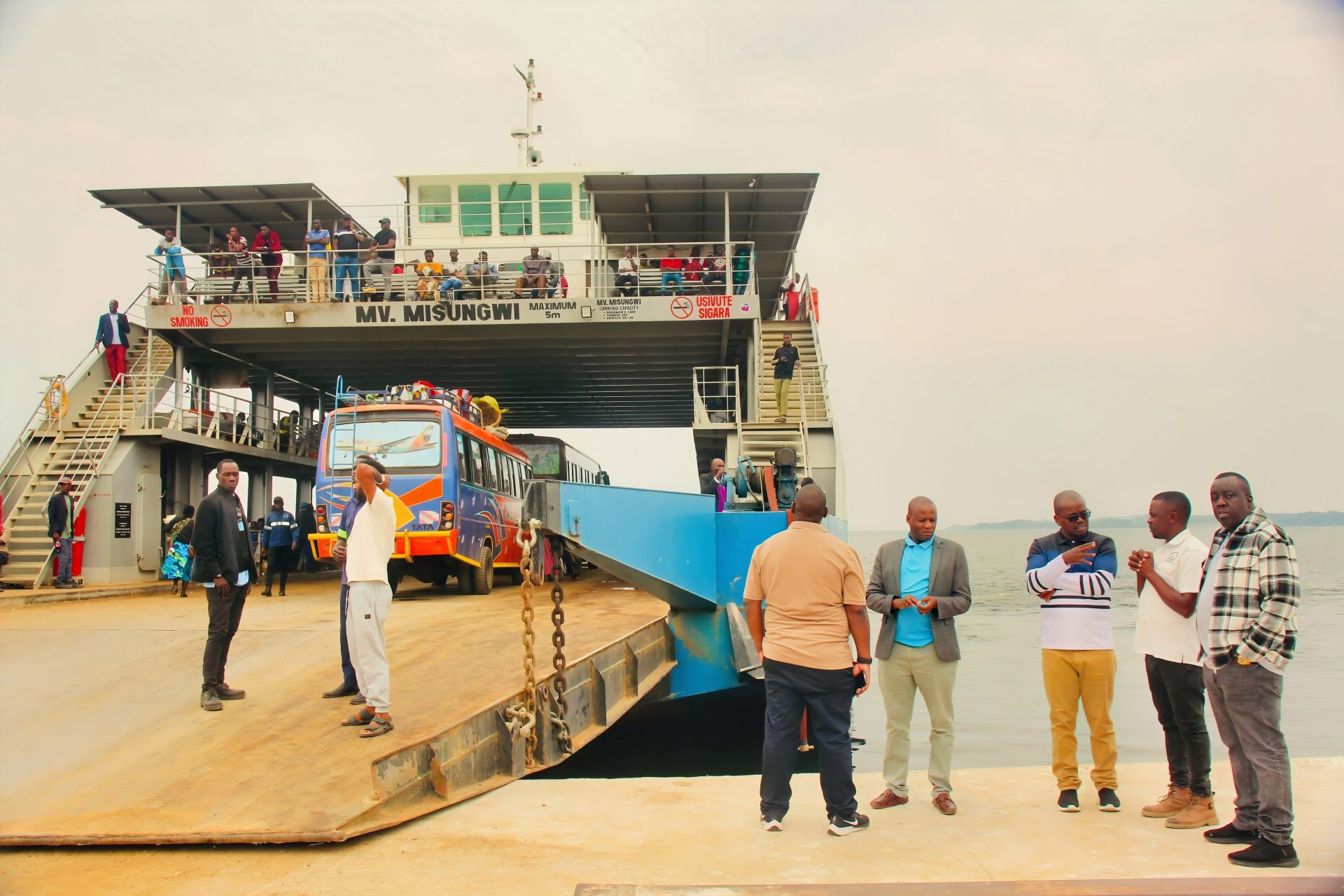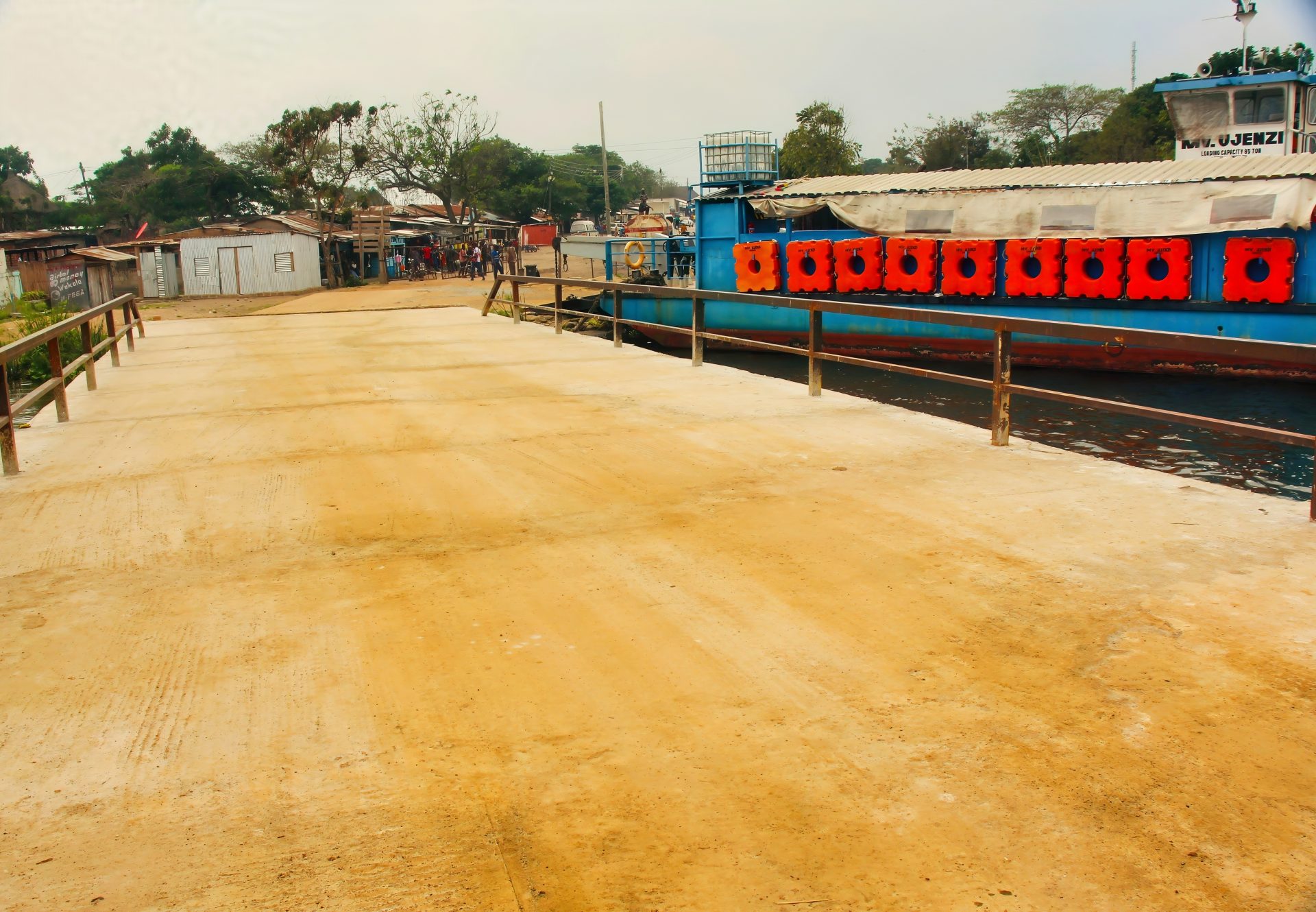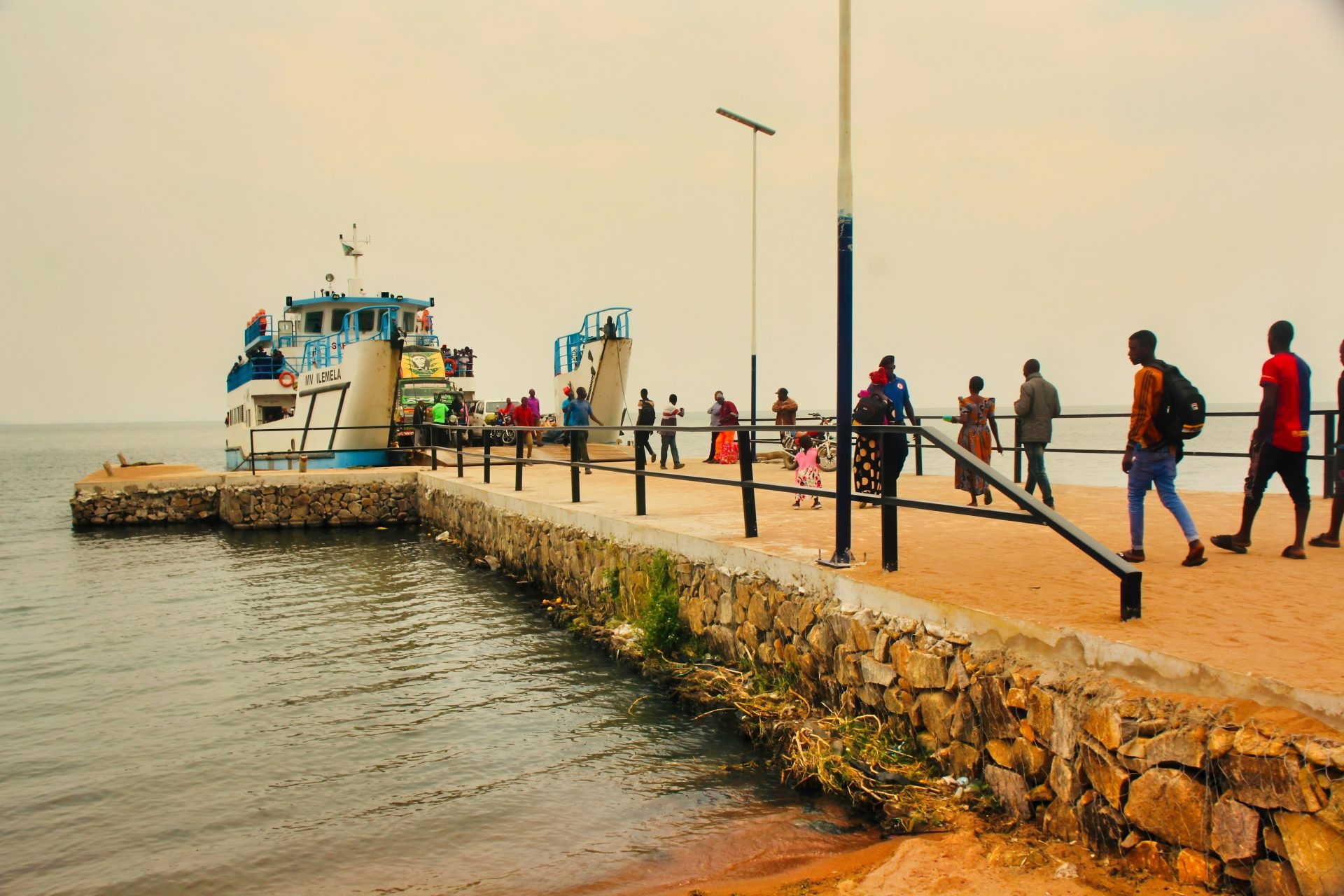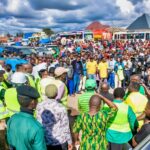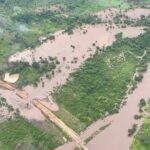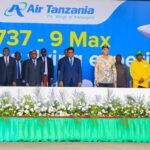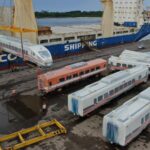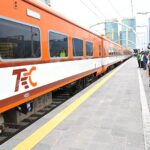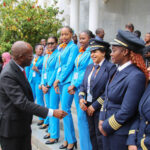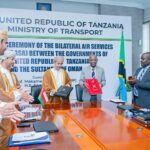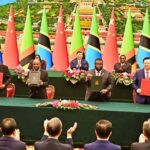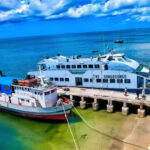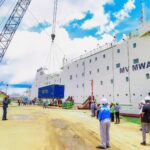New Lifeline on the Lake: Kanyala Ward Ferry Service Set to Transform Lives in Mwanza
For generations, the vast waters of Lake Victoria have shaped life in Kanyala Ward, Sengerema District – sustaining communities yet isolating 15,000 residents from vital opportunities. Now, a transformative chapter begins. The Tanzanian government, through TEMESA (Tanzania Electrical, Mechanical and Electronics Services Agency), has launched a landmark ferry service to replace perilous mashua boats with a safe, regulated alternative.
Led by TEMESA Chief Executive Lazaro Kilahala, this initiative centres on the newly completed Kisorya ferry car park and features the MV UJENZI alongside the redeployed MV MISUNGWI, with larger purpose-built ferries imminent. Beyond mere transport, this project is a socio-economic catalyst for Buchosa City Council and the wider Mwanza Region, promising:
-
Enhanced safety for crossings in all weather
-
Affordable access to markets, healthcare, and education
-
Economic revitalisation through efficient cargo transport (vehicles, perishables)
-
Inclusive growth aligning with Tanzania’s national development vision
Yet success hinges on sustained investment, rigorous maintenance, and genuine community engagement. As Kilahala asserts, “citizens will see how much their government cares” – but true care means ensuring fair fares, environmental stewardship, and lasting reliability. Explore how Kanyala’s ferry could redefine Lake Victoria connectivity – or risk becoming another unrealised promise.
The significance and nuances of this development:
-
The Ripple Effect: How 15,000 Lives Will Feel the Ferry’s Touch in Kanyala Ward
When TEMESA Chief Executive Lazaro Kilahala speaks of over 15,000 residents poised to benefit from the new Kanyala Ward ferry service, it’s tempting to see just a number. But in the Tanzanian context, nestled within the bustling rhythms of Mwanza Region and the daily realities of Sengerema District, this figure represents a profound seismic shift. As the old Swahili adage goes, “Maji yanayotiririka hufanya mchanga kuwa mwamba” – “Flowing water turns sand into rock.” The true impact of this ferry service lies not merely in its immediate function, but in the countless, cumulative ways its benefits will solidify and strengthen the very fabric of Kanyala’s community, transforming fluid daily struggles into foundations for growth.
Here’s a deeper dive into the scale of this impact, painted with the hues of Lake Victoria’s shores:
-
Beyond the Headcount: The Human Tapestry: Those 15,000 souls are not a monolith. They are:
-
The Fishmonger from Igombe: Rushing her freshly caught sangara (Nile Perch) and dagaa (sardines) to Bukoba markets before they spoil, currently gambling on overloaded mashua or paying exorbitant lorry fares via long, bumpy roads. The ferry means predictable crossings, lower costs, and fresher fish fetching better prices.
-
The Secondary School Pupil in Kanyala: Who currently misses days of lessons when rough weather makes the mashua crossing too perilous. Reliable ferry service means consistent education, brighter exam prospects, and a tangible step towards breaking cycles of disadvantage.
-
The Coffee Farmer near Kisorya: Struggling to transport his sacks efficiently to buyers in Buchosa City Council. The ferry’s capacity for vehicles means he can hire a pickup lorry directly, slashing middleman costs and boosting his profit margin significantly.
-
The Nurse at Kanyala Dispensary: Needing urgent medical supplies or specialist referrals across the lake. Previously delayed by unreliable boats, the ferry ensures vital medicines and timely patient transfers, directly improving health outcomes.
-
The “Mama Ntilie” Running a Duka: Whose stock of cooking oil, maize flour, and soap dwindles because suppliers find the crossing too arduous or expensive. Easier, cheaper transport means regular, affordable supplies for her shop and the entire neighbourhood.
-
-
The Domino Effect of Time and Shilling: The core promise – reduced travel time and cost – isn’t just convenience; it’s economic rocket fuel.
-
Time Saved is Productivity Gained: Hours previously lost waiting for boats or enduring long road detours can now be spent tending farms, running businesses, studying, or resting. A trader making two efficient crossings a day instead of one dramatically increases their earning potential.
-
Cost Savings Circulate Locally: Money saved on extortionate mashua fares or fuel for lengthy road journeys doesn’t vanish. It stays in the community – spent on school fees, invested in a small business, used to buy better food, or saved for the future. Saving TSh 3,000 per crossing, several times a week, adds up to transformative sums for a family budget over months.
-
Goods Become Cheaper and More Plentiful: Lower transport expenses for goods mean lower prices in Kanyala’s markets and dukas. Essential commodities, building materials, and agricultural inputs become more accessible, stimulating local commerce and improving living standards.
-
-
From Isolation to Integration – The Community Cement: The ferry acts as a powerful social integrator.
-
Connecting Families and Services: Easier access means more frequent visits to relatives in Buchosa town or neighbouring islands. It means specialists at Bugando Hospital in Mwanza city become reachable. It means attending weddings, funerals, and festivals previously missed.
-
Boosting Local Economies: Easier access to Kanyala also means easier access for others. The ward becomes a more viable destination for traders, service providers, and even small-scale tourism, bringing new money and opportunities into the community.
-
Safety and Security: Replacing precarious small boats, especially during the mvua kubwa (heavy rains) or strong winds, with a large, regulated ferry significantly reduces the risk of accidents on the water, bringing peace of mind to thousands of families every day.
-
The Adage in Action: “Maji yanayotiririka hufanya mchanga kuwa mwamba.” The individual benefits – a pupil arriving punctually, a farmer getting a fair price, a trader expanding her reach – are like the individual drops of water. Seemingly small on their own. But the constant flow enabled by this reliable ferry service will steadily erode the barriers of isolation and economic stagnation that Kanyala has faced. Day by day, crossing by crossing, shilling saved by shilling saved, these individual gains will accumulate, bind together, and solidify. They will form the bedrock – the mwamba – of a more resilient, prosperous, and connected community. This is the true scale of impact: 15,000 individual ripples converging into a powerful current of change for Kanyala Ward.
-
-
Navigating Calmer Waters: How the Kanyala Ferry Tackles a Lingering Transport Crisis
For the 15,000 residents of Kanyala Ward and its surrounding hamlets in Sengerema District, crossing Lake Victoria hasn’t been a simple journey; it’s been a daily gamble. As the Swahili adage poignantly reminds us, “Usisahau nyoka aliyekuwa na meno” – “Don’t forget the snake that had fangs.” For too long, the only transport options available carried inherent dangers and burdens, leaving the community with little choice but to navigate a precarious reality. The introduction of the TEMESA ferry service isn’t just an alternative; it’s a decisive intervention, addressing a profound transport crisis head-on.
-
Here’s a comprehensive look at the current challenges and how the ferry offers solutions, deeply rooted in the Tanzanian lakeshore setting:
The Perilous Status Quo:
-
The Overloaded “Mashua” Menace: The ubiquitous wooden boats, locally known as mashua or dinghies, are the current lifeline. But they are chronically overloaded, often carrying passengers and goods far beyond safe capacity. Life jackets are scarce or non-existent. When the kaskazi winds whip across the lake from the northeast or storms brew during the mvua (rains), these vessels become death traps. Tragic capsizings, while not always making national headlines in Dar es Salaam, are a grim, whispered reality known to every lakeshore community, instilling deep-seated fear in families whenever loved ones cross.
-
Chronic Unreliability: Schedules are dictated by weather, boat availability, and the whims of operators. A crucial hospital appointment in Buchosa City Council, a vital exam at a secondary school across the water, or delivering perishable dagaa (sardines) to market – all hang on the unpredictable arrival of a mashua. “Will the boat come today?” is a constant, anxiety-inducing question.
-
The Costly, Gruelling Road Detour: The alternative – travelling by road – is often a marathon. Routes skirting the lake can be circuitous, taking hours longer. Dusty, potholed tracks during the dry season become treacherous, impassable mud baths in the rains, prone to lorry breakdowns and tyre punctures. Hiring a vehicle for this journey is prohibitively expensive for most, especially farmers transporting bulky produce. The gharama (cost) in both time and shillings is immense, stifling economic activity.
-
Inefficiency for Commerce: Transporting goods is a particular nightmare. Bulky sacks of maize, cassava, or coffee? A motorbike for repair? Building materials? Mashua are ill-suited, leading to multiple trips, damage, or simply the inability to move larger items. Road transport for goods is even more costly and slow. This inefficiency strangles local trade, depresses farmgate prices, and inflates the cost of essential goods like cement or roofing sheets in Kanyala itself.
The Ferry: A Vital, Safer, Regulated Alternative:
-
Safety First: The new, larger ferries under construction by TEMESA are designed and built to modern safety standards. They will have adequate life-saving equipment (life jackets, lifeboats), proper buoyancy, and experienced, certified crews trained in emergency procedures. They are built to handle Lake Victoria’s moods far better than overloaded mashua. This directly addresses the “fangs” of the current transport snake, offering peace of mind that is currently priceless.
-
Regulation and Reliability: TEMESA operates to strict schedules and regulatory oversight. While weather will still play a role for extreme conditions, residents can plan their lives around published ferry timetables. Knowing a ferry departs Kanyala jetty at 7:00 AM and 2:00 PM daily transforms uncertainty into predictability for accessing markets, schools, healthcare, and government services in Buchosa and beyond.
-
Purpose-Built for People and Cargo: These ferries have significant capacity for both passengers and vehicles (including lorries and pickups). This is revolutionary:
-
Passengers: Safe, comfortable (relative to mashua), uncrowded crossings.
-
Goods: Farmers can transport entire lorry-loads of produce directly to major markets in one efficient crossing. Traders can bring in bulk supplies reliably. Building projects become feasible as transporting cement, timber, and steel by ferry lorry is suddenly viable. This efficiency drastically reduces costs and spoilage (imagine tomatoes no longer rotting during a long road detour).
-
-
Operational Oversight: As a government agency, TEMESA is accountable. Fares are regulated and published. Safety drills and maintenance schedules are (ideally) enforced. There are established channels for complaints or feedback, unlike the often opaque operations of individual mashua owners. This regulation brings order and fairness to a critical public service.
The Adage’s Resonance: Removing the Fangs
“Usisahau nyoka aliyekuwa na meno” powerfully frames the current crisis. The mashua and the dreadful road detours were the snake with fangs – a dangerous but necessary evil born from a lack of alternatives. The community hadn’t forgotten the peril; they had simply endured it because survival demanded it. The TEMESA ferry service represents a conscious effort by the government to finally remove those fangs. It’s an acknowledgement of the crisis and a commitment to providing a fundamentally safer, more reliable, and economically enabling mode of transport.
-
This intervention goes beyond mere convenience. It’s about safeguarding lives, restoring dignity to daily commutes, unlocking economic potential stifled by inefficiency, and integrating Kanyala Ward properly into the fabric of Sengerema District and the wider Mwanza Region. The ferry doesn’t just cross water; it navigates the community away from a legacy of transport peril towards a future anchored in safety and opportunity.
-
Forging a New Current: How Larger Ferries Herald a Modern Era for Kanyala
TEMESA Chief Executive Lazaro Kilahala’s announcement of new, larger ferries under construction for Kanyala Ward isn’t merely an operational upgrade; it’s a deliberate stride into modernity for a community long served by vessels better suited to a bygone era. In the Tanzanian context, where Lake Victoria’s rhythms dictate daily life, this shift resonates deeply with the wisdom of the Swahili adage: “Kamba hukunjwa ikishachanika” – “A rope is coiled when it’s new.” This speaks to the potential and necessity of proper handling for new things. These purpose-built vessels represent a fresh, robust coil of rope – a modern tool – offering unprecedented capacity and efficiency, but their true value will be realised only through skilled deployment and sustained care.
Here’s a comprehensive look at what this modernisation through larger ferries truly means for Kanyala and Sengerema District:
-
The Quantum Leap in Capacity:
-
Beyond Crowded “Mashua”: Contrast the precarious, overloaded wooden mashua, perhaps carrying 20–30 people and minimal baggage at serious risk, with a modern ferry. TEMESA’s new builds will likely accommodate hundreds of passengers comfortably and safely per crossing, with dedicated seating and weather protection. This alone revolutionises peak-time travel, school runs, and market days.
-
Embracing Vehicles – The Game Changer: Crucially, these ferries are designed with roll-on/roll-off capability for vehicles. This is transformative:
-
Lorries (Malori): Farmers can now load entire lorry-beds with coffee, maize, cassava, or fish directly onto the ferry, eliminating the backbreaking task of manual unloading/reloading onto smaller boats or the exorbitant cost and delay of the road detour. Bulk transport becomes viable and economical.
-
Pickups (“Pick-ups”) & Vans: Essential for smaller traders, local contractors, and service providers (e.g., delivering building materials, transporting livestock, moving shop stock).
-
Cars & “Bodaboda” Motorbikes: Enabling officials, healthcare workers, technicians, and businesspeople to travel efficiently with their transport, extending their reach and effectiveness within Kanyala and beyond.
-
“Daladala” & Buses: Potentially revolutionising public transport links, allowing minibuses to operate integrated routes spanning both sides of the crossing.
-
-
-
Engineering Efficiency:
-
Slashing Queues, Saving Time: Larger capacity means significantly more people and vehicles moved per trip. This drastically reduces the frustrating, time-wasting queues that plague overloaded mashua terminals, especially during morning and evening peaks or market days. Waiting hours under the sun or rain becomes a memory.
-
Faster Turnaround (Potentially): Modern ferries are designed for efficient loading and unloading via ramps, especially for vehicles. Compared to the slow, manual process of boarding small boats, this speeds up the entire crossing operation, allowing for more frequent scheduled services.
-
Optimising Resources: One large ferry making efficient crossings can replace dozens of mashua trips, concentrating resources (crew, fuel, maintenance) into a more manageable, regulated, and potentially more cost-effective operation for TEMESA.
-
-
Unlocking Economic Potential:
-
Bulk Cargo Revolution: The ability to transport lorries directly is the key to unlocking Kanyala’s economic engine. Agricultural produce can reach larger, more lucrative markets in Mwanza city, Bukoba, or even further afield faster and cheaper, fetching better prices for farmers. Conversely, fertiliser, machinery parts, and consumer goods become cheaper and more accessible in Kanyala.
-
Enabling Trade & Construction: Traders can import/export larger volumes reliably. Building schools, clinics, or homes becomes more feasible and affordable as cement, timber, roofing sheets, and equipment can be transported all together by lorry directly to the ward. Local artisans and contractors gain new opportunities.
-
Attracting Investment: Reliable, modern infrastructure for moving goods and people makes Kanyala a significantly more attractive prospect for businesses considering setting up shop or investing in local agriculture or tourism ventures.
-
-
Symbolism and Government Intent:
-
Tangible Progress: These large, visible vessels are potent symbols of government investment and commitment to the Lake Zone’s development. They are physical proof of Kilahala’s assertion of the government’s care, moving beyond rhetoric to concrete action.
-
Aligning with National Goals: This modernisation aligns directly with Tanzania’s broader goals of improving rural connectivity, boosting agricultural value chains, and fostering inclusive growth. It demonstrates a commitment to integrating lake communities into the national economic mainstream.
-
The Adage’s Imperative: “Kamba hukunjwa ikishachanika” (A rope is coiled when it’s new)
This adage frames perfectly the promise and the challenge:
-
The New Rope (The Ferries): They represent fresh potential, strength, and capability – a modern solution designed for the task.
-
The Need for Proper Coiling (Skilled Management): The adage implies the new rope must be handled correctly from the start. For Kanyala, this means:
-
Robust Maintenance: Ensuring strict, well-funded maintenance schedules are adhered to from day one to prevent the rapid deterioration seen with some past TEMESA assets.
-
Efficient Operations: Training crews to manage vehicle loading/unloading smoothly and enforce safety protocols rigorously to maximise efficiency and safety.
-
Community-Centric Scheduling: Designing timetables that truly serve the needs of farmers going to market, pupils heading to school, and patients accessing care.
-
Protecting the Investment: Ensuring adequate security at jetties and preventing vandalism or misuse.
-
The larger ferries are undeniably a beacon of modernisation for Kanyala Ward. They promise to turn the lake from a barrier into a true highway for people, vehicles, and commerce. However, their lasting impact, their ability to truly transform the “rope” of Kanyala’s transport infrastructure into a durable, reliable tool for progress, hinges entirely on how well TEMESA and the government “coil” this new resource – managing it with foresight, diligence, and an unwavering commitment to serving the community effectively for the long haul. The new vessels are impressive, but their legacy will be written by the quality of their operation.
-
-
Building on Solid Ground: The Kisorya Jetty – More Than Just Tarmac for Kanyala’s Ferry
When TEMESA Chief Executive Lazaro Kilahala confirmed the completion of the Kisorya ferry car park, it might seem, at first glance, like a mundane piece of news – just some tarmac near the water. But for the nascent ferry service in Kanyala Ward, Sengerema District, this infrastructure represents the indispensable bedrock upon which the entire operation’s safety, efficiency, and long-term viability rest. It embodies the profound Swahili adage: “Nyumba hujengwa kwa mbao, hukaa kwa chokaa” – “A house is built with timber, but it settles (becomes stable) with lime/mortar.” The ferries are the timber – the visible structure. The Kisorya jetty and car park are the essential mortar, binding everything together securely and enabling the whole endeavour to function properly and endure.
Here’s a comprehensive look at why this infrastructure is fundamental, deeply rooted in the Tanzanian lakeshore reality:
The Chaos of the “Status Quo” Landing Sites:
Imagine the typical informal mashua landing point familiar across Lake Victoria’s shores in Tanzania:
-
A Scramble on the Shore: Passengers jostling in mud or dust, wading through shallow water with bags balanced on heads, children held tightly. Vehicles (if any attempt) park haphazardly, blocking access, churning up the ground, often getting stuck.
-
Loading/Unloading Bedlam: Goods manhandled from shore to boat or vice versa, a slow, labour-intensive process prone to damage and theft. No dedicated space for lorries, causing massive traffic snarls on access roads.
-
Safety Hazards: Uneven, slippery surfaces. No barriers between people and moving vehicles or the water’s edge. Poor lighting for pre-dawn or evening travel. Minimal security presence.
-
Inefficiency Reigns: Delays compound as boats struggle to find space to dock, passengers take time to embark/disembark awkwardly, and vehicles manoeuvre chaotically. A crossing that should take 30 minutes can consume hours just in the boarding process.
Kisorya Jetty & Car park: The Essential Mortar:
The completed infrastructure directly addresses these failings, providing the foundation for a modern, regulated service:
-
Purpose-Built Docking Facility:
-
Sturdy Jetty: A solid structure extending into deeper water allows the larger ferries (like MV UJENZI and the upcoming new builds) to dock safely and securely, regardless of minor water level fluctuations. Passengers and vehicles board directly from a stable platform, eliminating the need to wade.
-
Appropriated Water Depth: Designed specifically for the ferry drafts, ensuring safe approach and berthing, reducing the risk of grounding – a common issue for larger vessels at informal sites.
-
-
The Transformative Car park (Staging Area):
-
Order from Chaos: Designated lanes and parking bays for different vehicle types – lorries (malori), pickup trucks, cars, bodabodas, and pedestrian walkways – separate traffic flows, preventing dangerous mingling and congestion.
-
Efficient Vehicle Processing: Ample, level, surfaced space (likely tarmac or compacted gravel) allows vehicles to queue safely and board systematically via the ferry’s ramps. No more sinking into mud or desperate manoeuvres on a crumbling bank.
-
Secure Waiting: Passengers can wait comfortably (perhaps under shelters in future phases) and board in an orderly fashion, improving dignity and safety, especially for the elderly, children, and those carrying goods.
-
Essential Ancillaries: Space incorporates (or allows for future addition of) crucial support: a ticket office, basic toilets, security post, and potentially small vendor kiosks – the beginnings of a proper transport node.
-
-
Enabling Safety and Regulation:
-
Controlled Environment: The defined space allows TEMESA staff and security to effectively manage crowds, check tickets, enforce safety rules (e.g., vehicle weight limits), and respond to incidents.
-
Reduced Hazards: Clear separation of people and vehicles, stable surfaces, proper lighting (when installed), and security presence drastically cut accident risks compared to the chaotic scramble of traditional landings.
-
Foundation for Compliance: Provides the physical basis for enforcing operational regulations and safety standards demanded of a formal ferry service.
-
-
Operational Efficiency & Scalability:
-
Faster Turnaround: Efficient loading/unloading of vehicles and passengers via ramps onto a stable jetty is exponentially faster than manual methods on a beach. This allows for more crossings per day and adherence to schedules.
-
Handling Capacity: The staging area is designed to hold the expected queue of vehicles and people for the ferry’s capacity, preventing spill-over chaos onto public roads.
-
Future-Proofing: Built with the new, larger ferries in mind, this infrastructure can handle increased capacity from day one. It’s an investment designed for growth, not just the current MV UJENZI/MISUNGWI operation.
-
The Adage Resonates: “Nyumba hujengwa kwa mbao, hukaa kwa chokaa”
This wisdom captures perfectly the relationship between the ferries (the mbao – timber) and the jetty infrastructure (the chokaa – lime/mortar):
-
The Ferries (Mbao): They are the essential structure, the visible asset promising connection and progress. Without them, the house (service) doesn’t exist.
-
The Jetty & Parking (Chokaa): This is what binds it altogether, provides stability, ensures durability, and allows the structure to function as intended. A magnificent ferry is rendered inefficient, unsafe, and potentially unusable without a proper place to dock and manage its traffic. The infrastructure settles the service, making it reliable, safe, and functional for the long term.
Conclusion:
The completion of the Kisorya ferry car park is far more significant than mere construction. It is a deliberate, necessary investment in the enabling environment for the Kanyala ferry service. It transforms a potentially chaotic and dangerous lakeside scramble into a managed, efficient, and safe transport interchange. It signifies that the government understands that providing a ferry isn’t just about launching a boat; it’s about building a complete, functional system. By providing this essential mortar – this foundation of order and safety – TEMESA and the Tanzanian government are demonstrating a commitment not just to starting the service, but to ensuring it operates effectively, reliably, and safely for the 15,000 residents of Kanyala Ward for years to come. The house is being built properly, from the foundations up.
-
-
The Wisdom of Steps: Why TEMESA’s Phased Rollout is Key for Kanyala’s Ferry Success
The sight of the MV UJENZI already operating alongside the redeployed MV MISUNGWI at the newly completed Kisorya jetty isn’t just a temporary arrangement; it’s a deliberate stroke of strategic planning by TEMESA. This phased approach to launching the Kanyala Ward ferry service speaks volumes about operational prudence, deeply resonating with Tanzanian pragmatism. It embodies the Swahili adage: “Kupanda mchele si mwisho wa chakula” – “Planting rice isn’t the end of the meal.” Just as harvesting, threshing, milling, and cooking must follow planting before rice nourishes anyone, deploying the large, transformative ferries requires careful preparatory steps to ensure the service truly feeds the community’s needs. Rushing headlong could spoil the pot.
Here’s a comprehensive analysis of the profound importance of this phased strategy in the Tanzanian lakeshore context:
Why Not Just Wait for the Big Ferries? The Perils of Rushing:
Imagine TEMESA waiting solely for the grand arrival of the new, larger vessels before starting any service in Kanyala:
-
Operational Chaos on Day One: Crews unfamiliar with the specific Kisorya jetty layout, local weather patterns affecting docking, vehicle loading procedures, and passenger flow management would be learning under immense pressure with a large, demanding vessel. Chaos, delays, and potential safety incidents would be highly likely, damaging public confidence immediately.
-
Unrefined Systems: Ticketing systems, scheduling based on actual observed demand peaks (e.g., market days, school terms), security protocols, and communication channels with the community would be untested. Glitches and frustrations would dominate the initial experience.
-
Lack of Local Capacity: TEMESA staff, from dock masters to ticket clerks to security personnel, need time to establish routines, understand the unique dynamics of Kanyala crossings, and build rapport with the community they serve.
-
No Contingency: If the single large ferry encountered technical difficulties (a common challenge in marine transport), the entire service would collapse instantly, leaving 15,000 residents stranded, reverting instantly to the perilous mashua – a devastating blow to trust.
The Phased Approach: Planting the Rice Before the Feast:
The deployment of MV UJENZI and MV MISUNGWI first is the essential cultivation period:
-
Establishing the Service Foundation:
-
Proof of Concept: It demonstrates the government’s immediate commitment. Residents see tangible action now with existing vessels, building anticipation and trust before the larger upgrade arrives.
-
Jetty & Systems Testing: These vessels serve as the perfect test subjects for the newly built Kisorya infrastructure. How do the ramps function with different vehicle types? Where are bottlenecks in passenger flow? How does the car park handle queues on a busy market day? Real-world data is gathered without the pressure of a flagship vessel.
-
Operational Blueprint: TEMESA can establish and refine core operational procedures – ticketing, boarding sequences for vehicles/pedestrians, safety briefings, communication protocols with port authorities, and daily maintenance checks – in a live environment. Lessons learned are incorporated into the plan for the larger ferries.
-
-
Building Human Capacity & Community Trust:
-
Crew Training & Familiarisation: Captains and crew gain invaluable experience navigating the specific route, docking at Kisorya, and understanding local conditions (currents, weather quirks). They become the experienced core for training new crews on the larger vessels.
-
Ground Staff Development: Dock managers, security personnel, ticket officers, and maintenance teams establish their roles, routines, and teamwork on-site. They learn to manage crowds, handle queries, and ensure smooth daily operations.
-
Community Engagement & Feedback: This initial phase allows TEMESA to actively engage with Kanyala residents, duka owners, farmers, and school heads. What are the peak travel times? Are the fares appropriate? Where are the pain points? This feedback loop is crucial for tailoring the service before the major capacity increase. It builds a sense of partnership.
-
Building Ridership Habits: Residents begin integrating the ferry into their daily lives, understanding the schedules, and experiencing the initial benefits (safety, reliability over mashua), creating a loyal user base ready for the enhanced service.
-
-
Ensuring a Smoother Transition & Building Resilience:
-
Incremental Scaling: Moving from the current vessels to the larger ferries is a step-change, not a giant leap. Systems, staff, and the community are already accustomed to a ferry service, making the integration of larger capacity more manageable.
-
Immediate Redundancy: Having two vessels (MV UJENZI and MV MISUNGWI) operating initially provides critical redundancy. If one needs maintenance or encounters an issue, the other can maintain a basic service level, preventing a total shutdown and maintaining community trust. This resilience continues even after the larger ferries arrive.
-
Demand Validation & Refined Scheduling: Actual usage data from this phase allows TEMESA to accurately predict demand patterns for the larger ferries, optimising schedules to match school runs, market days, and peak commuting times efficiently, maximising the new vessels’ impact.
-
The Adage’s Lesson: “Kupanda mchele si mwisho wa chakula” (Planting rice isn’t the end of the meal)
This adage encapsulates perfectly TEMESA’s wisdom:
-
The Big Ferries (The Meal): They are the ultimate goal – the nourishing solution, promising transformation.
-
The Phased Rollout (Planting, Tending, Harvesting): MV UJENZI and MV MISUNGWI represent the essential, often less glamorous, preparatory work. They are the planting of the operational seeds, the tending of community relationships, and the gradual harvesting of experience and trust. Skipping these steps risks serving an undercooked, chaotic, or unsustainable “meal” that fails to satisfy the community’s hunger for safe, reliable transport.
Conclusion:
TEMESA’s decision to launch the Kanyala service with MV UJENZI and MV MISUNGWI before deploying the new, larger ferries is far from a compromise; it’s a masterclass in effective public service implementation within Tanzania’s complex realities. It acknowledges that true transformation requires more than just impressive hardware; it demands meticulous preparation, human capacity building, community integration, and robust operational systems. This phased approach minimises disruption, maximises learning, builds vital trust, and ultimately ensures that when the larger ferries do arrive, they operate not in isolation, but as the powerful culmination of a carefully nurtured service ready to deliver its full potential to the people of Kanyala Ward. The rice is being planted and tended with care; the community can look forward to a far more nourishing meal in the near future.
-
-
Unlocking the Lake’s Bounty: The Ferry as Kanyala’s Engine of Transformation
The arrival of the TEMESA ferry service in Kanyala Ward is far more than a convenience; it’s the spark poised to ignite a profound socio-economic transformation across Sengerema District. As the Swahili adage sagely observes, “Maji ukiyavulia nguo huna budi kuyaoga” – “If you undress the water, you have no choice but to bathe in it.” For generations, Lake Victoria’s vastness has effectively “clothed” Kanyala in isolation, masking its potential and limiting its people’s choices. Reliable, affordable ferry transport is the act of undressing that water, exposing the community to a current of opportunities they can now scarcely avoid embracing. It compels progress, catalysing development across every facet of life.
Here’s a comprehensive exploration of this catalytic power, deeply rooted in the Tanzanian lakeshore reality:
1. Revolutionising Agriculture & Rural Livelihoods:
* Perishables to Profit: Imagine the tomato farmer near Igombe. Pre-ferry, a significant portion of his harvest spoiled during the slow, bumpy road detour or risky mashua transfer to Buchosa market. Now, a lorry loaded directly onto the ferry delivers crisp, red tomatoes in under an hour. Reduced spoilage = higher profits. Similarly, dairy farmers can get milk to processing plants, fishermen their dagaa (sardines) to drying racks or markets while still fresh. Impact: Increased farmgate incomes, reduced post-harvest losses (a major national issue), incentivising higher production.
* Market Access & Fair Prices: Farmers are no longer captive to low prices offered by itinerant middlemen who capitalised on their transport difficulties. Easier access to larger markets in Buchosa City Council and Mwanza allows them to negotiate better prices for coffee, maize, cassava, and beans. Impact: Enhanced bargaining power, diversified income sources, greater investment in farming inputs.
* Input Affordability: Fertiliser, quality seeds, and pesticides become cheaper and easier to transport into Kanyala via ferry lorries, lowering production costs and boosting yields.2. Empowering Trade & Commerce:
* Expanding Trader Horizons: The “Mama Ntilie” running a duka in Kanyala centre can now source supplies directly from wholesalers in Buchosa or Mwanza, bypassing layers of mark-up. She can order larger, more diverse stock (e.g., cooking oil, soap, stationery, fabrics) knowing the ferry brings it reliably. Impact: Lower consumer prices, wider product choice, healthier profit margins for shopkeepers.
* New Markets for Artisans: Craftspeople making baskets, pottery, or furniture can now feasibly transport larger quantities to sell in urban markets or supply tourist lodges on other lake shores, expanding their customer base significantly.
* Attracting Investment: Reliable transport makes Kanyala a viable location for larger businesses – perhaps a maize mill, a fish processing cold store, or an agro-dealer. Entrepreneurs see reduced logistical headaches and access to a wider labour pool and consumer market. Impact: Job creation, increased local value addition, retention of wealth within the community.3. Transforming Education & Human Capital:
* Punctuality & Attendance: Secondary school pupils like Esther from Kanyala beach no longer miss days because rough weather grounded mashua. Reliable ferry schedules mean consistent attendance, reducing dropout rates, especially for girls often burdened with domestic duties if delayed. Impact: Improved academic performance, higher exam pass rates, brighter future prospects for youth.
* Teacher Retention & Recruitment: Schools become more attractive workplaces for qualified teachers when they know they can commute reliably from Buchosa or other lake-shore towns. Impact: Improved quality of education, stability for schools.
* Access to Further Education: Reliable transport enables students to attend colleges, vocational training (VETA), or universities in Mwanza or beyond, previously a logistical and financial nightmare. Impact: Development of skilled workforce, breaking cycles of limited opportunity.4. Enhancing Healthcare Access & Outcomes:
* Reaching Critical Care: A mother needing an emergency Caesarean section at Bugando Referral Hospital in Mwanza, or a patient requiring dialysis, can be transferred reliably via ambulance using the ferry. Impact: Lives saved, better management of chronic conditions.
* Medicine & Supplies: Health dispensaries in Kanyala Ward receive essential medicines and vaccines regularly and without spoilage via efficient ferry transport. Impact: Consistent healthcare provision, disease prevention, improved maternal and child health.
* Specialist Access: Patients can realistically attend outpatient appointments with specialists in Buchosa or Mwanza. Community Health Workers can travel for training more easily. Impact: Earlier diagnosis, better treatment, enhanced local healthcare capacity.5. Connecting Labour to Opportunity:
* Commuting to Jobs: Reliable, affordable ferries open up job opportunities in Buchosa City Council, nearby industries, or Mwanza for Kanyala residents. A factory worker, shop assistant, or construction labourer can now commute daily or weekly. Impact: Reduced urban migration pressure, diversified household incomes, skills development.
* Service Provision: Plumbers, electricians, mechanics, and other skilled workers from Buchosa can easily offer services in Kanyala, improving local infrastructure and home maintenance. Impact: Improved living standards, local skills transfer.6. The Multiplier Effect: The benefits cascade. The farmer with more income spends more at Mama Ntilie’s duka. The duka owner employs an assistant. The lorry driver spending the night in Kanyala before an early crossing buys dinner and pays for lodging. The teacher commuting daily uses a bodaboda from the jetty. Impact: A vibrant, interconnected local economy with money circulating more rapidly within and beyond the ward.
The Adage’s Force: “Maji ukiyavulia nguo huna budi kuyaoga”
This powerful proverb captures the inevitability of change the ferry brings:
-
The Water (Lake Victoria): Represents the physical barrier and the metaphorical “clothing” of isolation and limited opportunity.
-
Undressing the Water (The Ferry Service): This is the deliberate act of removing that barrier, making the possibilities plain and accessible.
-
No Choice But to Bathe (Socio-economic Transformation): Once the barrier is gone and the opportunities (the water) are exposed, the community must engage. Farmers will get their goods to better markets. Students will reach school reliably. Traders will expand. Patients will seek better care. Investment will flow. The ferry compels participation in a wider economic and social sphere; stagnation is no longer viable.
Conclusion:
The TEMESA ferry service for Kanyala Ward is not merely a transport link; it is the key unlocking a cascade of socio-economic progress. By dismantling the logistical and financial barriers imposed by Lake Victoria, it empowers individuals, revitalises commerce, strengthens human capital, and integrates the ward into the regional economy. It transforms the lake from a hindrance into a highway for prosperity. The adage reminds us that this transformation, once set in motion by removing the “clothing” of isolation, becomes an unstoppable force. The people of Kanyala are now poised not just to dip their toes, but to fully immerse themselves in the currents of opportunity, fundamentally reshaping their future and proving that true development flows when communities are effectively connected. The water has been undressed; the transformative bath for Kanyala’s economy and society has well and truly begun.
-
Safeguarding the Gift: Why Environmental & Safety Vigilance is Non-Negotiable for Kanyala’s Ferry
The arrival of TEMESA’s larger ferries in Kanyala Ward promises a brighter future, but this progress carries inherent responsibilities. As the Swahili adage wisely cautions, “Ukipewa maziwa, usiache tita” – “If given milk, don’t neglect the calabash.” The ferry service is the nourishing milk – a precious gift of connectivity and opportunity. However, neglecting the “calabash” – the essential vessels of environmental protection and stringent safety – risks spoiling the gift entirely. Ensuring the sustainable, safe operation of these new vessels isn’t an afterthought; it’s the fundamental duty that underpins the service’s long-term value and public trust in the Tanzanian lakeshore context.
Here’s a comprehensive breakdown of these critical considerations:
1. Environmental Stewardship on Lake Victoria:
* Fuel Management & Potential Spills: Larger ferries consume significant diesel. Robust procedures are vital for bunkering (refuelling), preventing leaks from engines or fuel tanks, and containing any accidental spills. A major spill near Kanyala could devastate fish breeding grounds (vibwabwa), affecting dagaa (sardine) catches and contaminating water sources used by lakeside villages. Mitigation: Double-hulled fuel tanks, regular inspections, spill response kits onboard and at the jetty, and crew training in spill containment are essential.
* Sewage & Grey water: Hundreds of passengers generate waste. Discharging untreated sewage or grey water (from sinks/showers) directly into Lake Victoria contaminates the ecosystem and poses health risks to communities relying on the lake for bathing and washing. Mitigation: Installation of holding tanks for sewage and grey water, with strict protocols for pump-out at designated, licensed facilities in Buchosa or Mwanza. Promoting onboard toilet use only when necessary, near shore.
* Solid Waste Management: Without controls, plastic bottles, food wrappers, and other rubbish from passengers can easily end up polluting the lake and shores. Mitigation: Adequate, clearly labelled bins onboard and at the Kisorya jetty, regular waste collection contracts, and public awareness campaigns (e.g., “Keep Our Lake Clean” posters in Swahili).
* Anti-Fouling Paint & Hull Maintenance: Paints used to prevent barnacles and weeds can leach toxic biocides. Hull cleaning/scraping in the lake releases these contaminants and invasive species. Mitigation: Using less toxic, approved antifouling paints, and conducting hull maintenance in designated dry docks away from sensitive areas.
* Noise Pollution: Engine noise can disturb wildlife and lakeside tranquillity. Mitigation: Regular engine maintenance for optimal efficiency and noise reduction, adhering to speed limits near sensitive shores or fishing areas.
2. Stringent Safety Protocols: The Bedrock of Trust:
* Preventative Maintenance Regime: Lake Victoria’s conditions are demanding. Rigorous, scheduled maintenance – not just reactive fixes – for engines, steering, propulsion, hull integrity, and safety equipment is paramount. Cutting corners here, as history on other Tanzanian routes shows, courts disaster. Action: TEMESA must implement and publicly audit a comprehensive, well-funded maintenance schedule, potentially using digital logs.
* Crew Training & Certification: Beyond basic navigation, crews need regular, mandatory training in:
* Emergency Procedures: Abandon ship drills, firefighting, flooding control, man-overboard recovery (using rescue boats/dan buoys), using life-saving appliances (LSAs).
* Crowd & Vehicle Management: Safely loading/unloading vehicles (preventing shifting cargo), managing passenger flows, especially during peak times or emergencies.
* Weather Assessment: Understanding Lake Victoria’s rapidly changing conditions (like sudden matlai storms) and knowing when not to sail.
* First Aid & Crisis Communication.
* Passenger Management & Capacity Enforcement: Strict adherence to certified passenger and vehicle weight limits is non-negotiable. Overloading was a key factor in tragedies like the MV Bukoba disaster. Action: Electronic ticketing linked to capacity, visible load lines, trained staff enforcing limits firmly, clear announcements on capacity before boarding.
* Life-Saving Equipment (LSA) & Drills: Sufficient, serviceable life jackets for EVERY soul onboard, plus lifeboats/rafts. Equipment must be easily accessible, not locked away or buried under cargo. Regular, realistic drills involving crew and volunteer passengers are crucial to ensure everyone knows what to do in an emergency. Equipment checks must be logged meticulously.
* Vessel Stability & Loading Procedures: Specific procedures for vehicle positioning and securing must be followed to maintain stability, especially in rough weather. Crew must be trained to calculate and monitor this.
3. Transparency: The Currency of Public Trust:
* Publicising Standards: TEMESA should clearly communicate the safety and environmental standards the ferries adhere to (e.g., IMO guidelines adapted for inland waters) and the maintenance schedule.
* Incident Reporting: Establish clear, accessible channels for passengers and crew to report safety concerns (leaks, faulty equipment, overcrowding attempts) or environmental breaches (illegal dumping, spills) without fear of reprisal.
* Independent Oversight & Audits: Regular inspections and audits by the Surface and Marine Transport Regulatory Authority (SUMATRA) should be encouraged, and their findings summarised publicly. Community liaison officers could facilitate feedback.
* Visible Compliance: Passengers seeing well-maintained vessels, crew wearing life jackets during drills, accessible life jackets, and uncrowded decks are powerful indicators of commitment.
The Adage Imperative: “Ukipewa maziwa, usiache tita” (If given milk, don’t neglect the calabash)
This proverb cuts to the heart of the matter:
-
The Milk (The Ferry Service): Represents the immense potential benefit – economic growth, social connection, improved lives.
-
The Calabash (Environmental & Safety Protections): Represents the essential container – the rigorous, ongoing practices needed to preserve the value of the service and prevent it from becoming a source of harm or disappointment. Neglecting the calabash (safety cuts, skipped maintenance, environmental disregard) means the precious milk (the ferry’s benefits) will inevitably spill, sour, or be lost, undermining all the initial promise and investment.
Conclusion:
The new ferries offer Kanyala Ward a transformative lifeline. However, their legacy will be defined not just by their capacity or schedules, but by TEMESA’s unwavering commitment to environmental responsibility and gold-standard safety. Lake Victoria is a shared treasure and a demanding mistress. Protecting its waters and ensuring every crossing is as safe as humanly possible is not optional; it’s the sacred duty that comes with operating on its vast expanse. By prioritising rigorous maintenance, comprehensive training, strict capacity enforcement, proper waste management, and radical transparency, TEMESA can ensure the ferry service truly becomes a sustainable, trusted asset for generations. The milk has been given; diligent care of the calabash is now paramount. Only then can Kanyala’s community fully enjoy the nourishing benefits of their new connection without fear for their lake or their lives.
-
Building on Lessons: Why TEMESA’s Past Informs Kanyala’s Ferry Future
The expertise TEMESA brings from managing vital services like the MV Victoria on the busy Mwanza crossing is undeniable. Yet, as the Swahili adage soberly reminds us, “Aliyekwisha shindwa na tembo, akiona jogoo huruka” – “He who has been defeated by an elephant will fly away at the sight of a chicken.” For communities like Kanyala Ward, past experiences with TEMESA’s challenges – ageing fleets, maintenance delays, and chronic overcrowding – are the “elephant” casting a long shadow. While the new ferries represent hope, true success hinges on consciously learning from these past struggles to ensure Kanyala isn’t spooked by mere “chickens” of recurring problems. Sustained investment, rigorous upkeep of the new assets, and sharp operational management are non-negotiable.
-
Here’s a comprehensive look at TEMESA’s track record, the challenges it presents, and the path forward for Kanyala:
TEMESA’s Vital Role & Inherent Challenges:
-
The Backbone of Lake Connectivity:
-
Critical Infrastructure: TEMESA operates essential ferry routes across Lake Victoria and other major waterways (like MV Victoria linking Mwanza to Ukerewe), forming the backbone of transport for islands and remote shores. This brings invaluable institutional knowledge of lake operations, route management, and vessel maintenance in theory.
-
National Mandate: As a government agency, TEMESA is tasked with providing affordable public transport, aligning with national development goals for connectivity and regional integration.
-
-
The Shadow of Past Struggles:
-
Ageing Fleet & Deferred Maintenance: Many TEMESA vessels, like the MV Victoria itself for periods, have suffered from advanced age. Chronic underfunding for maintenance and spare parts led to frequent breakdowns, cancellations, and prolonged dry-docking. This eroded public trust and forced reliance on riskier alternatives. Kanyala Concern: Will the new ferries receive a fundamentally different, sustained maintenance regime?
-
Maintenance Delays & Resource Constraints: Even scheduled maintenance often faced delays due to budgetary constraints, lack of specialised dry-dock facilities (sometimes requiring trips to Mombasa), or bureaucratic procurement hurdles for parts. This created a vicious cycle: ageing vessels break down more, requiring more maintenance, straining budgets further. Kanyala Concern: Will dedicated funding and streamlined processes protect the new ferries?
-
Chronic Overcrowding: Perhaps the most visible and dangerous challenge. Pressure to meet demand, lax enforcement, and sometimes collusion led to vessels sailing far beyond safe capacity. This was tragically highlighted by the 1996 MV Bukoba disaster and remains a concern on busy routes. Kanyala Concern: Can TEMESA resist pressure and enforce strict capacity limits on the larger, high-demand Kanyala route?
-
Operational Inefficiencies: Slipping schedules, lack of real-time passenger information, and sometimes opaque management fuelled public frustration. Perceptions of inefficiency or mismanagement undermined confidence.
-
Funding Instability: TEMESA’s operations often suffered from fluctuating government budgetary allocations, making long-term planning and preventative maintenance difficult.
-
Kanyala’s Success: Hinged on Breaking the Cycle:
The new ferries offer a clean slate, but avoiding past pitfalls demands proactive, systemic change:
-
Sustained Government Investment:
-
Beyond Capital Expenditure: The government must commit to recurrent, ring-fenced funding specifically for the Kanyala operation. This covers not just fuel and crew salaries, but crucially, a robust, preventative maintenance budget for the new ferries from day one.
-
Long-Term Asset Management Plan: Funding must be secured for eventual midlife refits and future vessel replacement decades ahead, avoiding the ageing fleet trap.
-
Infrastructure Upkeep: The Kisorya jetty and car park also need ongoing maintenance budgets.
-
-
Robust, Transparent Maintenance Schedules:
-
Preventative, Not Reactive: Implement strict, manufacturer-recommended maintenance schedules for engines, hulls, safety equipment, and navigation systems. Use digital logs for tracking.
-
Local Capacity Building: Invest in training TEMESA engineers in Mwanza on maintaining these specific new vessel types. Establish reliable local supply chains for common spare parts.
-
Transparency: Publicly share summaries of maintenance schedules and major servicing milestones to build accountability.
-
-
Effective Operational Management:
-
Zero Tolerance on Overcrowding: Implement and strictly enforce certified passenger and vehicle capacity limits using electronic ticketing linked to manifests, visible load lines, and empowered dock masters. Prioritise safety over short-term revenue or passenger pressure. This is the single biggest test of learned lessons.
-
Predictable Scheduling & Communication: Run services reliably to published timetables. Implement real-time updates (via SMS/radio/local noticeboards) for delays or cancellations.
-
Community Liaison: Establish a formal channel for Kanyala residents and stakeholders to provide feedback on operations, schedules, and safety concerns.
-
Empowered & Trained Local Staff: Ensure Kisorya jetty staff and ferry crews are well-trained, adequately resourced, and empowered to enforce rules and manage operations efficiently and safely.
-
Leveraging Technology: Explore simple tech solutions like CCTV for loading areas, GPS tracking for vessels, and digital fare collection to enhance efficiency and oversight.
-
The Adage’s Warning & Hope: “Aliyekwisha shindwa na tembo, akiona jogoo huruka”
This proverb frames perfectly Kanyala’s perspective:
-
The Elephant (Past TEMESA Failures): The community, aware of TEMESA’s historical struggles with ageing fleets, maintenance woes, and dangerous overcrowding, has experienced the “defeat” of unreliable or unsafe services elsewhere. These are major, systemic problems – the “elephant.”
-
The Chicken (Potential for Recurrence in Kanyala): Even smaller signs of similar problems emerging in Kanyala – a delayed maintenance schedule, a single overloaded sailing, a lack of spare parts causing downtime – could trigger deep distrust and fear (the “flight” at the chicken’s sight), undermining the entire project’s credibility and benefits.
-
The Imperative: TEMESA and the government must actively demonstrate that Kanyala is different. They must show, through consistent action and investment, that the lessons of the “elephant” have been learned, preventing even the smallest “chicken” of past failures from reappearing.
Conclusion:
TEMESA’s experience is a double-edged sword for Kanyala. It offers essential operational knowledge but also carries the baggage of past shortcomings that have deeply impacted public trust across Lake Victoria communities. The deployment of new ferries provides a critical opportunity to reset. However, this reset isn’t automatic. It demands a fundamental break from historical patterns through guaranteed, long-term funding, uncompromising preventative maintenance specifically for these new assets, and exemplary, safety-first operational management that visibly enforces capacity rules.
-
Success in Kanyala won’t just be measured by the ferries sailing, but by how they sail – reliably, safely, and efficiently, year after year. Only by consciously and consistently avoiding the pitfalls of the past can TEMESA ensure that the Kanyala community, once wary of the “elephant,” can embrace their new service with confidence, free from the fear of flinching at mere “chickens.” The promise of transformation rests on this commitment to learning and doing better.
-
The True Measure of Care: Why Community Voice and Fair Fares Define Kanyala’s Ferry Success
TEMESA Chief Executive Lazaro Kilahala’s assertion – “I believe that citizens will see how much their government cares about them” – speaks to a vital political commitment behind the Kanyala ferry service. Yet, in the vibrant, pragmatic communities dotting Sengerema District’s shores, genuine care is measured not just by the presence of a vessel, but by how it serves their daily lives. As the Swahili adage profoundly states, “Samaki mmoja akioza, huoza wote” – “If one fish rots, the whole basket spoils.” The ferry service is a basket meant to carry the community’s hopes. However, if crucial elements like authentic consultation and equitable affordability are neglected – if these “fish” rot – the entire endeavour risks spoiling, undermining the government’s well-meaning gesture and the project’s transformative potential. Long-term success hinges on embedding community voice, and ensuring access isn’t a luxury.
Here’s a comprehensive analysis of why engagement and affordability are non-negotiable pillars for Kanyala:
Beyond Rhetoric: The Imperative of Genuine Consultation
Kilahala’s statement is a start, but translating “care” into effective service requires moving beyond assumptions to active listening:
-
Understanding Real Needs, Not Imposing Schedules:
-
Farmers’ Timetables: When is peak departure time after harvesting coffee or maize? Is pre-dawn sailing essential for reaching Buchosa markets at opening? A schedule designed in Dar es Salaam offices might miss these critical windows.
-
School Rhythms: What time do pupils from outlying hamlets need to arrive at Kanyala jetty to reach school across the water? When do terms start/end, causing demand surges? Teachers need reliable return times.
-
Healthcare Access: Are there specific days for specialist clinics in Buchosa or Mwanza that require adjusted schedules? When do dispensaries need supply deliveries?
-
Market Days & Festivals: How do weekly market cycles or cultural events impact demand? Consultation Mechanism: Establish a Kanyala Ferry Liaison Committee – with reps from farmers’ groups, ujamaa villages, head teachers, health workers, women traders (WAWAWA), youth groups, and boat operators (if transitioning). Hold regular, minuted forums at the Kisorya jetty or ward office.
-
-
Safety Concerns from the Lake’s Edge:
-
Local Knowledge: Fishermen understand Lake Victoria’s hidden currents and sudden squalls (matlai) better than anyone. Their input on safe sailing times in different seasons is invaluable.
-
Loading/Unloading Realities: Are the ramps and walkways safe for elderly passengers or those carrying heavy loads? Is lighting adequate for pre-dawn trips? Community eyes spot hazards planners might miss.
-
Security at the Jetty: Concerns about theft, harassment, or safety at night? Local watch groups might have solutions. Consultation Mechanism: Incorporate safety-specific questions in forums and establish simple, anonymous reporting channels (e.g., a suggestion box at the ticket office).
-
-
Building Ownership & Trust:
-
Transparency in Process: Sharing draft schedules, fare proposals, and safety plans before finalisation, explaining constraints (e.g., maintenance needs, fuel costs), and demonstrating how feedback was incorporated.
-
Respecting Local Wisdom: Acknowledging that residents are experts in their own mobility needs fosters respect and cooperation. It transforms “government service” into “our ferry”.
-
Mitigating Conflict: Proactively consulting groups potentially displaced (like mashua operators) about transition plans or alternative livelihoods builds social cohesion.
-
Affordability: The Key to Unlocking Equitable Access
A ferry only the relatively well-off can use regularly fails its core purpose. Affordability isn’t charity; it’s smart economics and social justice:
-
Understanding Local Economics:
-
Income Realities: What is the average daily income of a smallholder farmer, a dagaa trader, or a market porter in Kanyala? Fares must be calibrated against this, not just operational costs. Charging TSh 5,000 per crossing might be feasible for a lorry driver but catastrophic for a pupil.
-
Frequency Matters: A fare might seem low for a single trip, but becomes burdensome for daily commuters (e.g., teachers, nurses, factory workers) or farmers needing multiple weekly market trips. Solution: Explore discounted multi-trip passes or monthly commuter tickets.
-
-
Setting Equitable Fare Structures:
-
Graduated Pricing: Implement lower fares for pupils (with ID), the elderly, and people with disabilities. Consider subsidised fares for essential workers like community health volunteers.
-
Vehicle vs. Passenger: Separate, transparent pricing for foot passengers, bicycles, bodabodas, cars, pickups, and lorries, reflecting space and resource use.
-
Subsidy Scrutiny: If operational costs necessitate fares beyond reach for many, TEMESA/government must transparently justify the need for and structure of subsidies to bridge the gap. This is where Kilahala’s “care” must manifest financially.
-
-
The Cost of Exclusion:
-
Reversion to Risk: If fares are too high, residents will be forced back to overcrowd, unsafe mashua or the costly road detour, negating the safety benefits.
-
Stifled Potential: Farmers unable to afford frequent ferry trips for goods won’t expand production. Pupils missing school due to cost will limit their futures. The ferry’s socio-economic catalyst effect evaporates.
-
Social Division: Creating a service only accessible to the better-off breeds resentment and undermines community cohesion, turning a symbol of progress into one of inequality.
-
The Adage’s Warning: “Samaki mmoja akioza, huoza wote” (One rotten fish spoils the whole basket)
This adage powerfully applies to the Kanyala ferry project:
-
The Basket (The Ferry Service): Represents the entire initiative – the vessels, the jetty, the promise of connectivity and progress.
-
The Fish (Critical Elements like Consultation & Affordability): These are essential components that must remain sound.
-
The Rot (Token Consultation or Unaffordable Fares): If community input is ignored, leading to impractical schedules, or if fares exclude the poor, these elements “rot.”
-
Spoiling the Whole Basket: This rot doesn’t stay contained. It erodes trust (“The government doesn’t listen”), renders the service ineffective or exclusionary, fuels resentment, and ultimately causes the entire project to fail in its core mission of inclusive development and demonstrating care. The good intentions and significant investment are spoiled by neglecting these vital components.
Conclusion:
Lazaro Kilahala is right: the Kanyala ferry can be a powerful symbol of government care. But that care must be demonstrated through action, not just words. It requires humbling engagement – genuinely listening to and incorporating the needs of farmers, pupils, traders, and elders who will use this service daily. It demands courageous commitment to affordability, ensuring fares are set not just for balance sheets, but for the realities of rural Tanzanian livelihoods, potentially requiring creative financing or targeted subsidies.
Ignoring these elements risks creating a white elephant – a modern ferry serving only a few, while the majority remain trapped by cost or inconvenient schedules, forced back onto perilous mashua. This would not only be an operational failure but a profound betrayal of the stated intent.
By prioritising deep community consultation and equitable access, TEMESA and the government can ensure the Kanyala ferry basket remains fresh and nourishing for all. They can transform Kilahala’s belief into tangible reality, proving that true care means building a service with and for the people, ensuring no one is left behind on the shore. Only then will the ferry truly carry the hopes of all 15,000 residents, solidifying its legacy as a genuine lifeline born of respect and shared purpose. The fish of engagement and affordability must be kept fresh to preserve the whole basket’s worth.
-
-
Weaving the Lake’s Fabric: Kanyala Ferry as a Stitch in Tanzania’s Broader Tapestry
When TEMESA Chief Executive Lazaro Kilahala references the government’s “long-term plan to improve ferry services,” the significance of the Kanyala project transcends its immediate shores. It’s not merely a local solution; it’s a deliberate stitch in a grander design to bind Lake Victoria’s communities, energise the Lake Zone economy, and propel Tanzania’s national ambitions. As the insightful Swahili adage teaches, “Kulia kuvuna, si kula mbegu” – “To eat the harvest, not the seed.” The Kanyala ferry is a vital seed being planted, not for its own sake, but as part of a conscious, sustained cultivation aimed at reaping a far greater regional and national harvest of connectivity and shared prosperity.
Here’s a comprehensive exploration of how Kanyala integrates into this broader vision, deeply rooted in Tanzania’s development landscape:
1. Integrating the Lake’s Fragmented Communities:
* Breaking Hydro-Isolation: Lake Victoria, while a shared resource, has historically fragmented communities along its Tanzanian shores (Mwanza, Mara, Kagera). Islands like Ukerewe and densely populated peninsulas like Buchosa faced isolation. Kanyala’s Role: It provides a critical, reliable link within Sengerema District, connecting remote Kanyala Ward directly to Buchosa City Council. This model, replicated elsewhere (e.g., linking Ukerewe more efficiently, connecting Mara’s Musoma to outlying fishing villages), gradually weaves a cohesive social and economic fabric across the lake.
* Enabling People-to-People Links: Reliable ferries facilitate not just trade, but cultural exchange, family visits, access to specialised services (like Bugando Hospital in Mwanza), and educational opportunities across the lake region. They shrink perceived distances, fostering a stronger regional identity.2. Boosting Regional Trade within the Lake Zone:
* Creating a Lake-Wide Market: Efficient, affordable ferry transport transforms Lake Victoria from a barrier into a liquid highway. Kanyala’s Role: By enabling Kanyala’s farmers to efficiently transport coffee, maize, and fish directly to Buchosa and onwards (via connecting ferries or roads) to Mwanza city – the Lake Zone’s commercial hub – it plugs this ward into regional value chains.
* Facilitating Cross-Border Commerce (Potentially): While primarily domestic, improved lake connectivity lays groundwork for smoother trade links with neighbouring Uganda and Kenya. Produce from Kagera or Mara regions could move more easily towards central Tanzania via integrated lake and road networks originating from hubs like Kanyala and Buchosa.
* Supporting Fisheries & Agro-Processing: Reliable transport for fresh fish (dagaa, Nile perch) to processing plants in Mwanza or Musoma, and for agricultural inputs (fertiliser, machinery) to farming communities, is vital for developing these key Lake Zone industries. The Kanyala model demonstrates how ferries enable bulk movement.3. Fulfilling National Development Goals:
* Connectivity as Cornerstone: Tanzania’s national development frameworks (like the Five-Year Development Plans and Vision 2025/2050) consistently prioritise improved rural connectivity as fundamental for inclusive growth and poverty reduction. Isolated communities are left behind. Kanyala’s Role: It exemplifies the government’s commitment to bridging geographical gaps, ensuring even lakeshore wards benefit from national progress.
* Inclusive Growth: The focus on affordable fares (crucial for Kanyala’s success) and connecting marginalised areas like Kanyala Ward aligns directly with goals of ensuring growth benefits all citizens, reducing spatial inequalities between major cities and rural/peripheral regions.
* Agricultural Transformation: Tanzania aims to move from subsistence to commercial agriculture. Kanyala’s Role: By slashing transport costs and spoilage for farmers, the ferry directly supports this goal, enabling market access and improving incomes in the vital agricultural sector within the fertile Lake Zone.
* Unlocking Tourism Potential: The Lake Zone boasts significant tourism potential (Serengeti, Rubondo Island, lake culture). Efficient, safe ferry links are essential for developing accessible, multi-destination tourism circuits. Kanyala improves access to Sengerema’s shores, potentially supporting local ecotourism ventures.
* Strengthening National Unity: Integrating remote communities through reliable infrastructure like ferries fosters a tangible sense of national inclusion and belonging, countering perceptions of neglect.The Broader Vision in Action: Beyond Kanyala
-
MV UJENZI & MV MISUNGWI: Their deployment to Kisorya isn’t random. It’s part of optimising TEMESA’s fleet across the lake, moving assets where demand and strategic need are highest, as foreshadowed in Kilahala’s statement.
-
New Vessel Construction: The larger ferries being built for Kanyala are likely part of a coordinated fleet renewal programme for Lake Victoria, replacing ageing vessels on multiple routes.
-
Infrastructure Synergy: The Kisorya jetty isn’t just for Kanyala. It’s a potential node connecting to future improved road networks within Sengerema and Buchosa, part of the larger transport web.
-
SUMATRA Oversight: The Surface and Marine Transport Regulatory Authority’s role in enforcing safety standards across all new and existing ferry services demonstrates the systemic, nationwide approach to improving lake transport.
The Adage’s Wisdom: “Kulia kuvuna, si kula mbegu” (To eat the harvest, not the seed)
This adage frames perfectly the strategic thinking:
-
The Seed (The Kanyala Ferry Investment): Represents the significant resources – financial, technical, and logistical – poured into this specific project. It’s a tangible commitment.
-
The Harvest (Integrated Lake Zone, National Prosperity): Represents the much larger, long-term goals – thriving interconnected communities, booming regional trade, reduced poverty, and national development fuelled by unlocked potential.
-
The Imperative: The government, through TEMESA, is demonstrating it understands this wisdom. They are not “eating the seed” by viewing Kanyala in isolation or as a mere political trophy. They are deliberately planting it (investing) as part of a cultivated long-term strategy (“long-term plan”) to reap the abundant regional and national harvest. Kanyala’s success becomes proof-of-concept, encouraging further investment and replication elsewhere on the lake.
Conclusion:
The MV UJENZI docking at Kisorya, the construction of larger ferries, and Kilahala’s words all point towards a vision far grander than just calming Kanyala’s waters. This project is a pivotal thread in Tanzania’s endeavour to weave the disparate shores of Lake Victoria into a unified, dynamic economic and social force. It embodies a commitment to ensuring the Lake Zone realises its full potential as an engine of national growth, where no community remains isolated by the very waters that sustain it.
By viewing Kanyala not as an endpoint, but as a vital seed sown within a meticulously planned national farm, the government signals its intent to cultivate a future where connectivity drives prosperity across the entire region. The adage reminds us that true statesmanship lies in planting seeds for harvests others will reap. The Kanyala ferry is one such seed. Its success will be measured not just by the smiles of residents on the Kisorya jetty, but by the thriving trade routes, integrated communities, and shared progress it helps germinate across the vast, life-giving waters of Lake Victoria in the years to come. The seed is sown; the nation watches, and waits, for the harvest.
-
Navigating the Headwinds: Critical Questions for Kanyala’s Ferry Future
While the promise of the Kanyala ferry service shines brightly, casting it as an unalloyed triumph ignores the complex realities of Tanzanian public infrastructure and lakeshore livelihoods. As the insightful Swahili adage cautions, “Aliyefunga mlango, hataingi ndege wala huzuni” – “He who closes the door blocks both birds and sorrows.” TEMESA and the government, by launching this ambitious project, have opened a door to progress. Yet, this open door necessitates confronting potential challenges head-on. Ignoring these “sorrows” – the valid counterarguments and risks – won’t make them vanish; it risks allowing them to fly in and undermine the endeavour. Success demands acknowledging and proactively planning for these headwinds.
Here’s a comprehensive exploration of the key counterarguments and considerations, grounded in Tanzania’s context:
1. Sustainability Concerns: Beyond the Launch Hype
-
The Core Question: Will the initial fanfare and investment be matched by decades of reliable funding for ongoing maintenance, crew salaries, fuel, and – crucially – eventual vessel replacement?
-
Tanzanian Realities: History, including TEMESA’s own record, shows a tendency for underfunding recurrent costs once the ribbon is cut. Ageing ferries languishing in disrepair are a common sight. Lake Victoria’s harsh environment accelerates wear-and-tear.
-
Risks of Neglect:
-
Deteriorating Assets: Without strict, funded maintenance schedules, the new ferries will quickly decline – engines fail, hulls corrode, safety equipment lapses. Service becomes unreliable, then unsafe.
-
Service Degradation: Breakdowns lead to cancellations and delays, eroding public trust and forcing a return to risky mashua.
-
Future Replacement Gap: Failing to save or plan for new vessels (a 20-30 year horizon) recreates the ageing fleet problem TEMESA struggles with elsewhere.
-
-
The Imperative: The government must institutionalise ring-fenced funding streams (e.g., dedicated fuel levy, treasury allocation) specifically for Kanyala’s whole-life costs. Transparent asset management plans and sinking funds for replacement must be established now, not deferred.
2. Fare Affordability: Ensuring the Lifeline Doesn’t Snap
-
The Core Question: Will operational costs and profit motives (if any) lead to fares that exclude the very people the ferry is meant to serve – smallholder farmers, market porters, pupils?
-
The Context: Kanyala is not Dar es Salaam or Mwanza city. Rural incomes are often meagre and seasonal. Charging TSh 5,000 per crossing might be trivial for a lorry owner, but catastrophic for a mother taking a sick child to Buchosa clinic.
-
Risks of Exclusion:
-
Reversion to Peril: High fares force residents back onto overloaded, unsafe mashua, negating the core safety benefit.
-
Stunted Economic Impact: Farmers skip market days due to cost, traders limit stock, pupils miss school – the promised socio-economic catalyst fails.
-
Deepening Inequality: The ferry becomes a service for the relatively affluent, breeding resentment and undermining social cohesion.
-
-
The Imperative: TEMESA must conduct rigorous local income assessments to inform fare setting. Implement graduated pricing (subsidised fares for pupils, elderly, low-income essential workers). Explore commuter discounts and government operational subsidies, transparently justified as an investment in rural development and safety. Affordability is not optional; it’s fundamental to the project’s purpose.
3. Impact on Existing Boat Operators: Navigating a Just Transition
-
The Core Question: What tangible support or alternative livelihoods will be provided for mashua owners, captains, and crew whose businesses face collapse?
-
The Human Dimension: These operators, however risky their service, are local entrepreneurs providing vital (if imperfect) transport. Abrupt displacement without alternatives causes significant hardship and community friction.
-
Potential Consequences:
-
Economic Hardship: Loss of income for operators, crew, and associated workers (e.g., boat builders, informal jetty attendants).
-
Social Unrest: Resentment could manifest as protests, sabotage, or attempts to undermine the ferry (e.g., spreading rumours).
-
Underground Operations: Mashua might continue illegally, targeting those priced out of the ferry, perpetuating risks.
-
-
The Imperative: A proactive, consultative transition plan is essential. Options include:
-
Integration: Licensing some mashua for feeder routes to the main ferry jetty or operating during off-peak hours/emergencies.
-
Buy-Back Schemes: Government-assisted retirement for older, unsafe vessels.
-
Retraining & Redeployment: Supporting operators/crew to train as ferry deckhands, security staff, jetty managers, or transition to fishing, aquaculture, or other trades via VETA programmes.
-
Microfinance Support: For establishing small new businesses (e.g., lake-side mama lishe stalls, bicycle repair, small-scale tourism).
-
4. Efficiency vs. Reality: Can TEMESA Deliver Consistently?
-
The Core Question: Can TEMESA overcome its historical challenges to provide truly reliable, punctual, and uncrowded service, especially as demand inevitably grows?
-
Past Shadows: Delays, cancellations, and chronic overcrowding have plagued other TEMESA routes, fuelled by ageing vessels, poor maintenance, lax enforcement, and pressure to meet demand.
-
Kanyala-Specific Risks:
-
Overcrowding Pressure: High demand + lax enforcement = sailing over safe capacity. The temptation will be strong, especially during peak seasons or if a ferry is out of service. The ghost of MV Bukoba looms.
-
Operational Inefficiency: Can TEMESA manage complex vehicle loading efficiently? Will schedules be adhered to consistently? Will communication about delays be effective?
-
Demand Surge: Success could rapidly increase demand, straining initial capacity before the larger ferries arrive or necessitating more frequent sailings faster than TEMESA can manage.
-
-
The Imperative: Zero-tolerance enforcement of capacity limits via technology (e.g., electronic ticketing/manifests) and empowered, ethical staff is non-negotiable. Robust maintenance prevents avoidable breakdowns. Realistic scheduling and proactive communication (SMS alerts, local radio) manage expectations. Contingency planning (e.g., utilising MV MISUNGWI/UJENZI as backups) is vital. TEMESA must demonstrate a new operational culture in Kanyala.
The Adage’s Resonance: “Aliyefunga mlango, hataingi ndege wala huzuni”
This proverb powerfully frames the need for proactive risk management:
-
Opening the Door (Launching the Ferry): Represents embracing progress and opportunity (the “birds”).
-
The Uninvited Sorrows (Sustainability Gaps, Unaffordability, Displacement, Overcrowding): These are the inherent risks that can fly in if the door is left unguarded.
-
The Imperative: TEMESA and the government cannot naively welcome only the “birds” of success. They must consciously “close the door” to specific, foreseeable sorrows by implementing:
-
Solid Funding Mechanisms: Barring the sorrow of decay.
-
Equitable Fare Structures: Barring the sorrow of exclusion.
-
Just Transition Plans: Barring the sorrow of community disruption.
-
Ironclad Safety Protocols: Barring the sorrow of preventable tragedy.
-
Efficient Systems: Barring the sorrow of unreliability.
-
Conclusion:
The Kanyala ferry holds immense transformative potential. However, its legacy will be defined not just by its launch, but by how TEMESA and the Tanzanian government navigate these critical counterarguments. Glossing over concerns about long-term funding, affordability for the poor, the fate of existing operators, and the operational rigour required is a recipe for disappointment, or worse. True success demands honest acknowledgement of these challenges and decisive, proactive strategies to mitigate them. It requires viewing the ferry not as a static project, but as a dynamic public service requiring sustained commitment, ethical management, and deep community partnership. By consciously “closing the door” to foreseeable sorrows, they can ensure the open door truly welcomes only the progress and prosperity Kanyala Ward so richly deserves. The launch is the beginning; vigilant stewardship is the enduring task.
The True Voyage Begins: Kanyala’s Ferry as a Seed of Collective Hope
The MV UJENZI gliding towards the newly completed Kisorya jetty is more than steel and engine; it is a profound covenant between the Tanzanian government and the people of Kanyala Ward. This ferry service represents a tangible investment etched not just in concrete and timber, but in the very futures of thousands in Sengerema District. It stands as a physical testament to the stated commitment of bridging the deep chasms – geographical isolation, economic stagnation, and social marginalisation – that have for generations defined life along Lake Victoria’s demanding shores. As the resonant Swahili adage teaches us, “Haba na haba hujaza kibaba” – “Little by little fills the measure.” The ferry’s launch is the first precious grain in the kibaba; the true measure of its worth, however, will be filled slowly, grain by grain, through the unwavering commitment and collective effort of the coming years.
Here’s a comprehensive reflection on this concluding thought, steeped in the Tanzanian context:
-
Beyond Convenience, Towards Transformation: Yes, it provides a safer, faster crossing. But its deeper value lies in being a catalyst. It carries the potential to transform:
-
The Fishmonger’s Dawn: No longer gambling her catch and life on an overloaded mashua, she boards confidently, her sangara ice-packed for Mwanza markets, fetching premium prices.
-
The Pupil’s Ambition: Esther attends Form IV lessons daily, rain or shine, her academic dreams no longer hostage to the lake’s moods, her path to university now visibly clear.
-
The Farmer’s Bargain: Mzee Chacha watches his coffee sacks roll smoothly onto the ferry lorry, knowing Buchosa buyers will compete for his quality beans, his profit margin finally fair.
-
The Community’s Pulse: Money circulates faster – at Mama Asha’s revitalised duka, at the bodaboda stand near the jetty, in the wages paid for the new maize store built with cement delivered affordably by ferry.
-
-
The Government’s Covenant – Tested by Time: Kilahala’s words speak of care, but lakeshore communities, weathered by promises, judge by deeds. This investment must be the start, not the peak:
-
Sustained Investment is Non-Negotiable: The gleaming new ferries will age. Lake Victoria will test them. Will the Treasury ensure the recurrent funding – for meticulous maintenance, trained crews, spares, and eventual replacement – decade after decade? This is the true test of commitment, beyond the ribbon-cutting.
-
Safety as Sacred Duty: Rigorous standards are meaningless without relentless enforcement. Overcrowding must remain an unthinkable taboo. Maintenance schedules must be sacrosanct. Transparency in safety audits builds the trust that turns users into stewards. The memory of past tragedies on these waters demands nothing less.
-
Centring the Community: Schedules must bend to market days and school terms. Fares must respect the meagre realities of a tomato farmer’s pocket. Feedback from fisherfolk on weather patterns must shape sailing times. The ferry succeeds only if it feels like theirs, not just a government imposition.
-
-
Measuring Success in the Soil of Kanyala: The true metric isn’t passenger numbers in the first month, but the palpable change witnessed years hence:
-
Thriving Markets: Fuller stalls in Kanyala centre, bulging with diverse, affordable goods brought in by reliable ferry lorry; Kanyala’s own produce – coffee, fish, vegetables – commanding better prices in Buchosa and Mwanza.
-
Fuller Classrooms: Reduced absenteeism, higher exam passes at Kanyala Secondary, and more graduates returning with skills or venturing confidently to colleges in Mwanza, accessed by the dependable ferry link.
-
Healthier Families: Clinic shelves consistently stocked; fewer maternal emergencies turning tragic due to delayed crossings; chronic patients keeping appointments with specialists across the lake.
-
The Hum of Progress: New enterprises – a fish-drying cooperative, a small welding workshop serving local farmers, perhaps even a guesthouse catering to visitors drawn to the lake’s beauty, all underpinned by reliable transport and growing local prosperity.
-
The Intangible: A Shift in Spirit: A standing taller, a sense of being visibly connected, no longer forgotten by the nation. The quiet confidence that comes with reliable opportunity.
-
The Adage’s Journey: “Haba na haba hujaza kibaba”
This timeless wisdom frames perfectly Kanyala’s moment:
-
The First Grains (The Launch): The completed jetty, the MV UJENZI and MV MISUNGWI starting services, the arrival of the new ferries – these are the initial, hopeful grains dropped into the kibaba.
-
Filling the Measure (The Long Haul): True success – the full kibaba – comes only with the steady, patient accumulation of countless small acts:
-
Every ferry sailing safely and on schedule.
-
Every maintenance check meticulously completed.
-
Every pupil whose fare is affordable.
-
Every farmer whose profit margin grows.
-
Every year of sustained government funding.
-
Every community concern heard and addressed.
-
-
The Collective Hand: Filling this kibaba is not a task for government alone. It requires the vigilance of passengers reporting safety concerns, the responsibility of crews upholding standards, the enterprise of local businesses seizing new opportunities, and the patience of a community investing its hope in the process.
Final Thought:
The launch of the Kanyala ferry service is a beacon of hope, a powerful statement of intent. But it is merely the departure. The arduous, essential voyage towards genuine, lasting transformation begins now. It is a voyage demanding unwavering vigilance on the bridge (safety), steady hands on the engine (maintenance), full commitment in the treasury (sustained investment), and constant listening to those on deck (the community).
If navigated with wisdom, perseverance, and an unshakeable focus on the well-being of every resident in Kanyala Ward, this ferry will become far more than a transport link. It will become the enduring current carrying Sengerema District towards a future where the vast waters of Lake Victoria no longer divide, but unite; no longer limit, but liberate; fulfilling the promise that the shores of this great lake can indeed be shores of shared prosperity and dignity. The first grain is in the measure; let the patient, collective filling begin.
Tanzania Media
- Kanyala Ferry Launch: TEMESA’s New Service for 15,000 Sengerema Residents (Mwanza) - 18 August 2025
- Russia-Tanzania Naval Cooperation: How the Smolny Training Ship Boosts Dar es Salaam’s Maritime Security - 18 August 2025
- Tanzania’s ICGLR Commitment: Stabilising the DRC & Great Lakes Region - 18 August 2025

